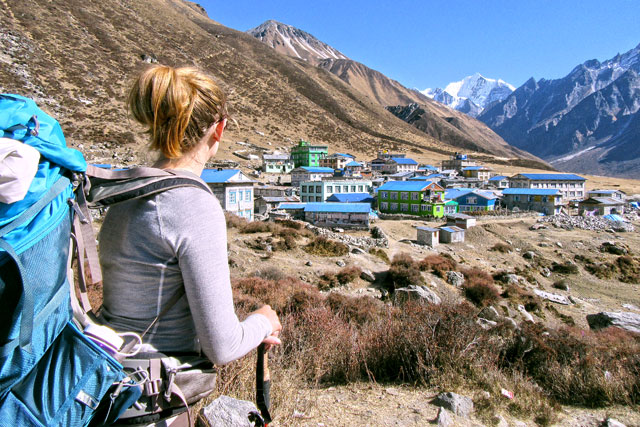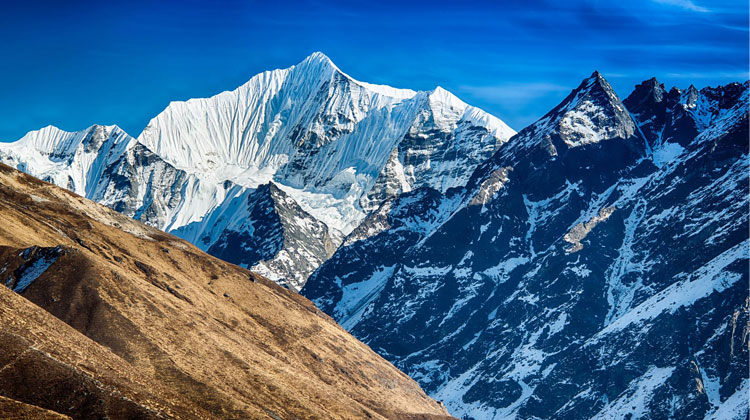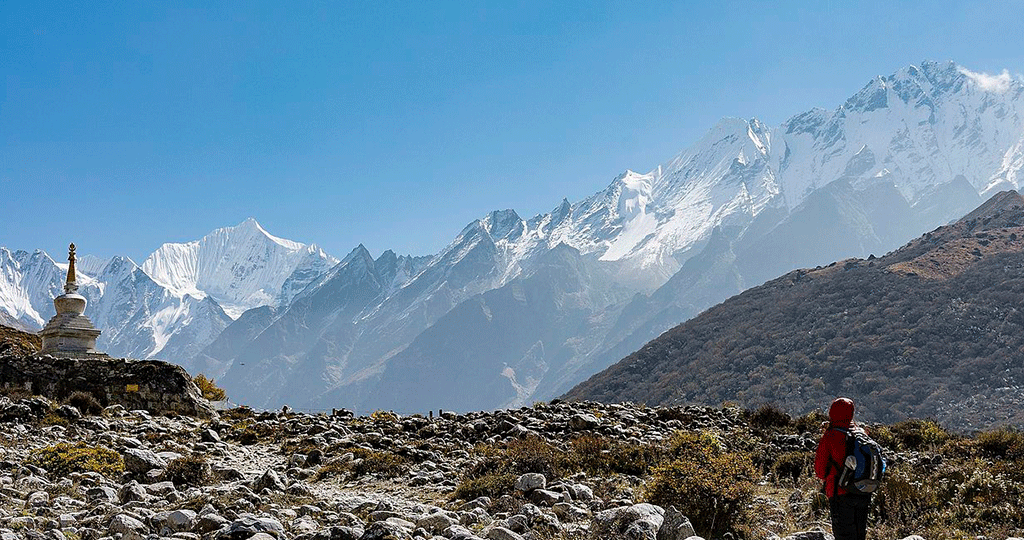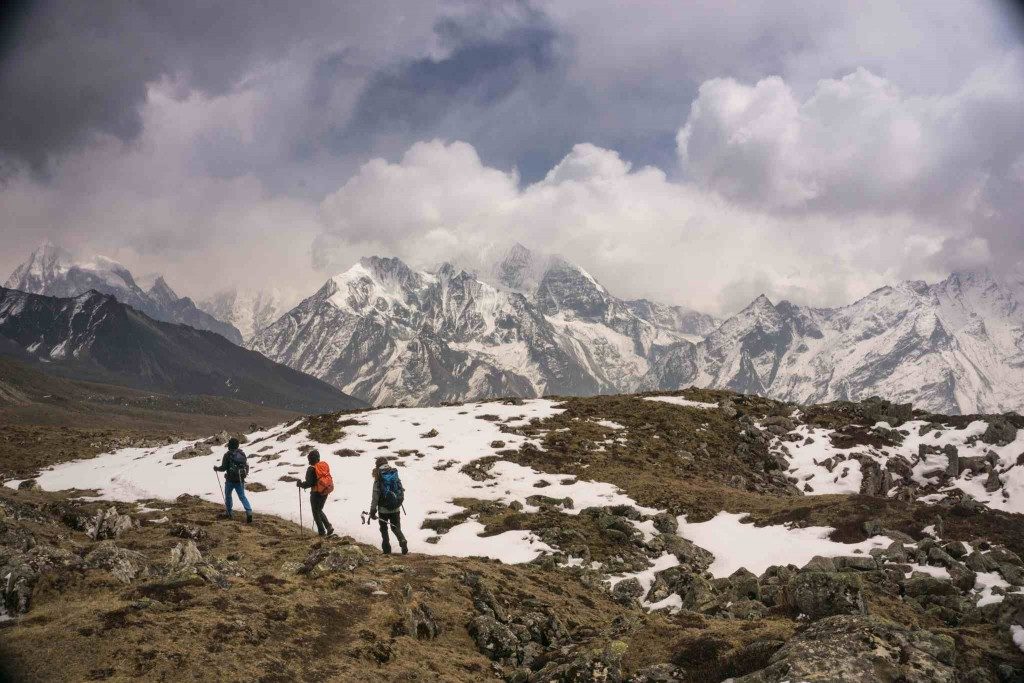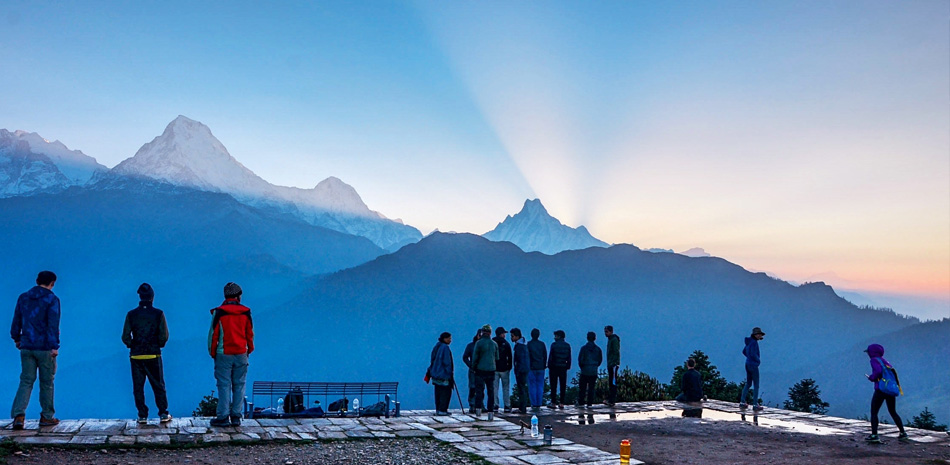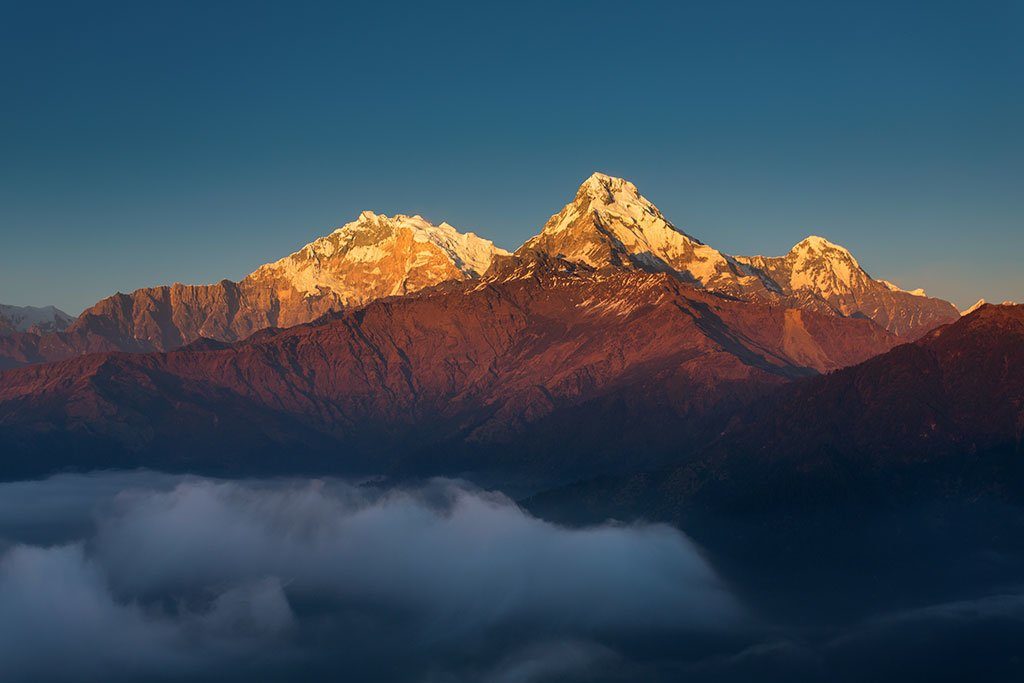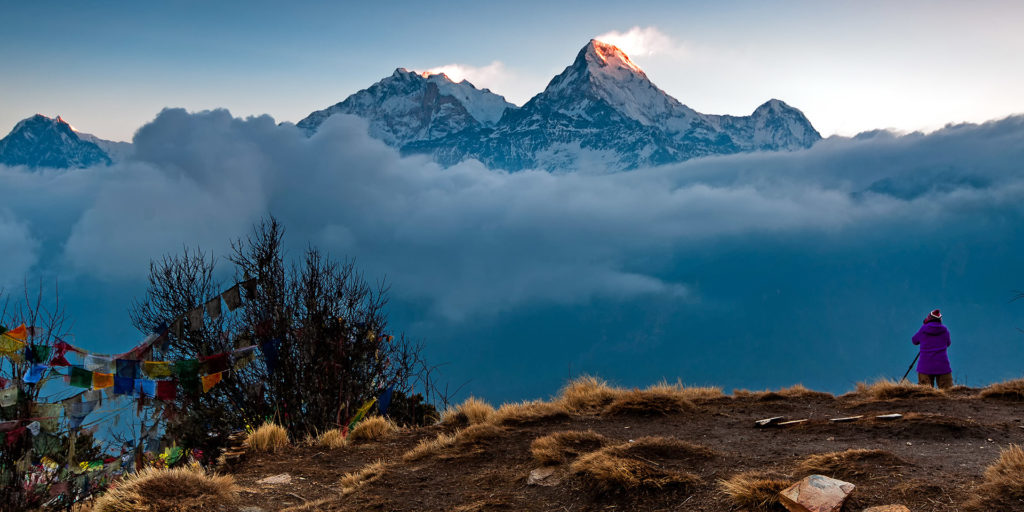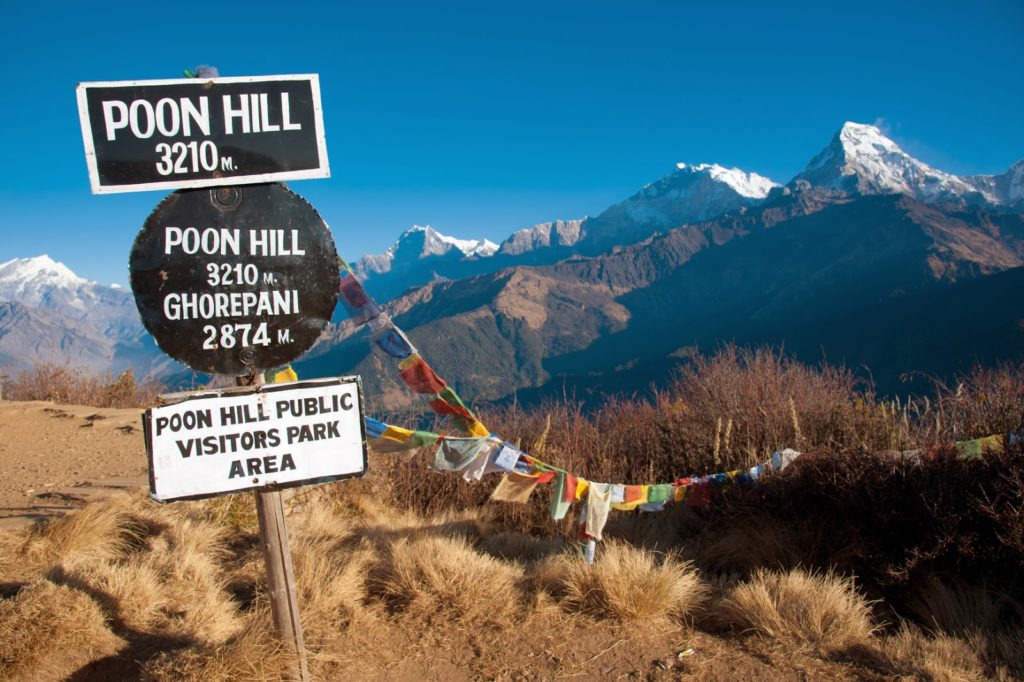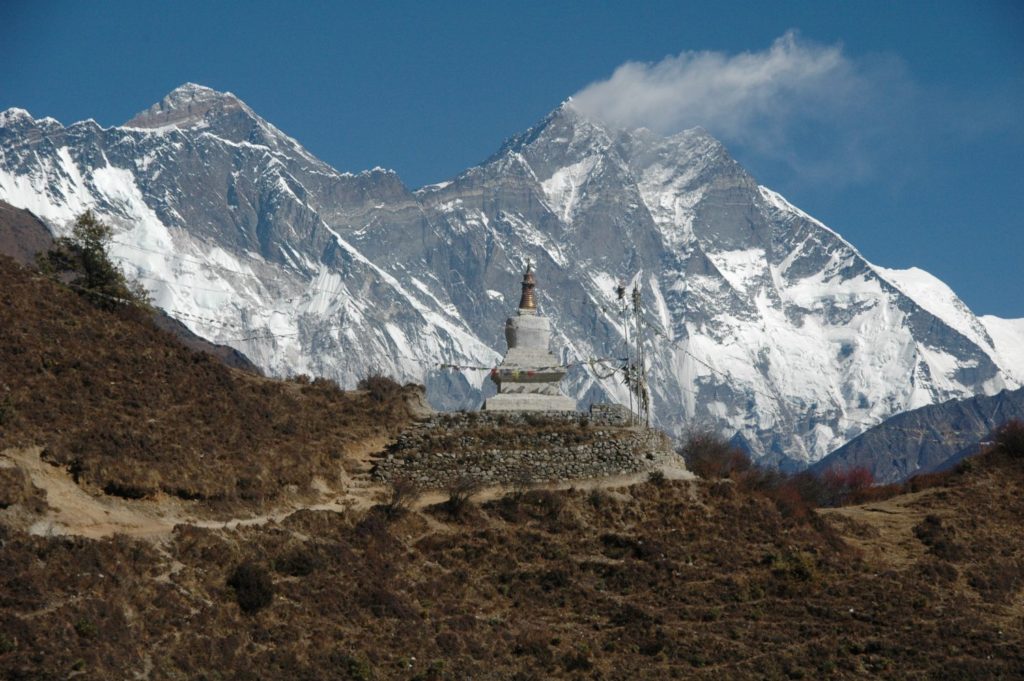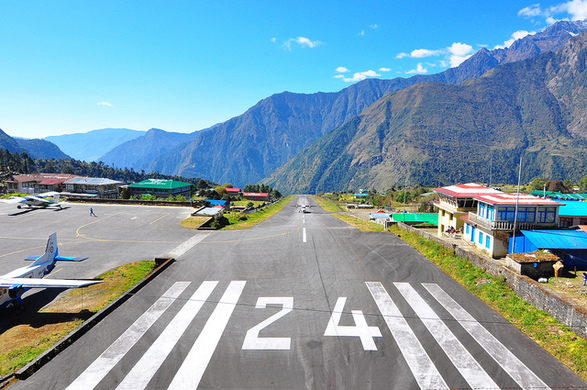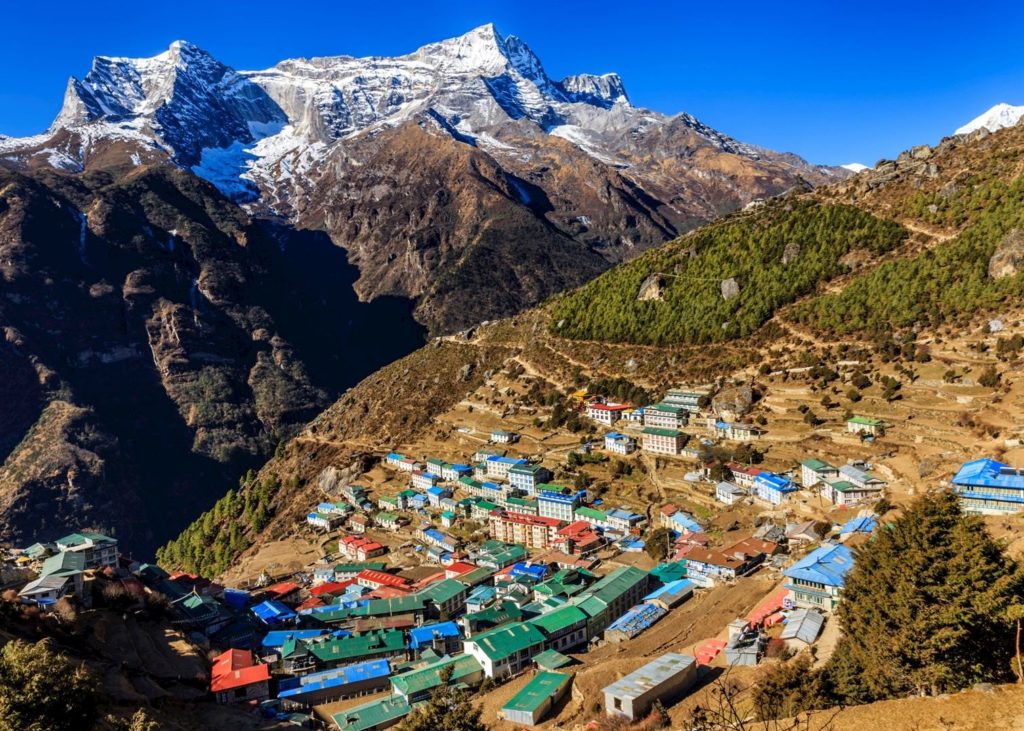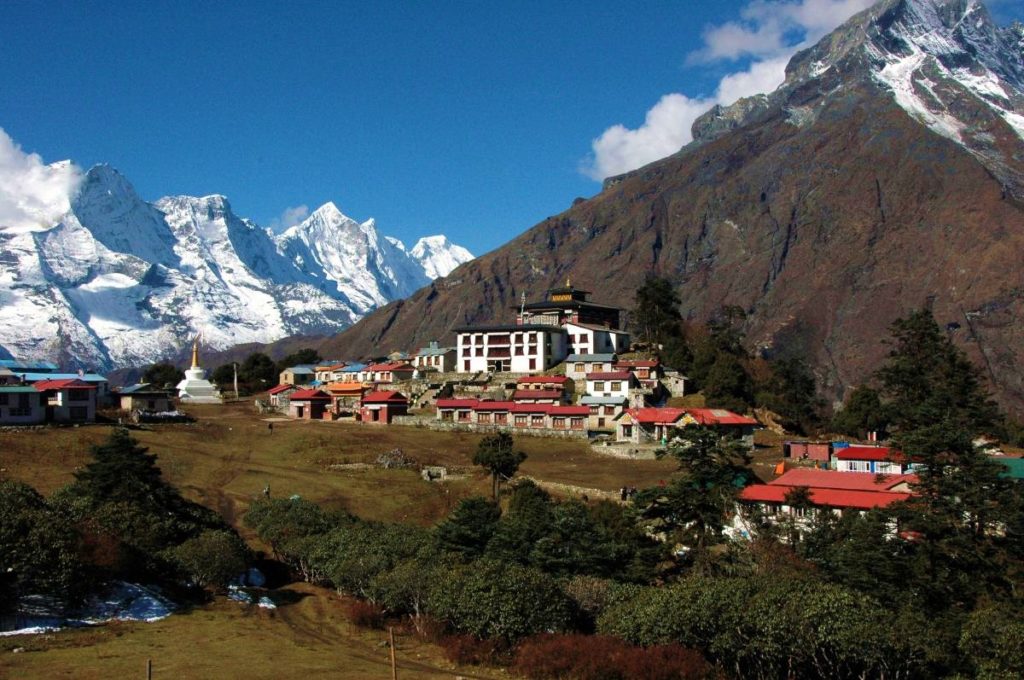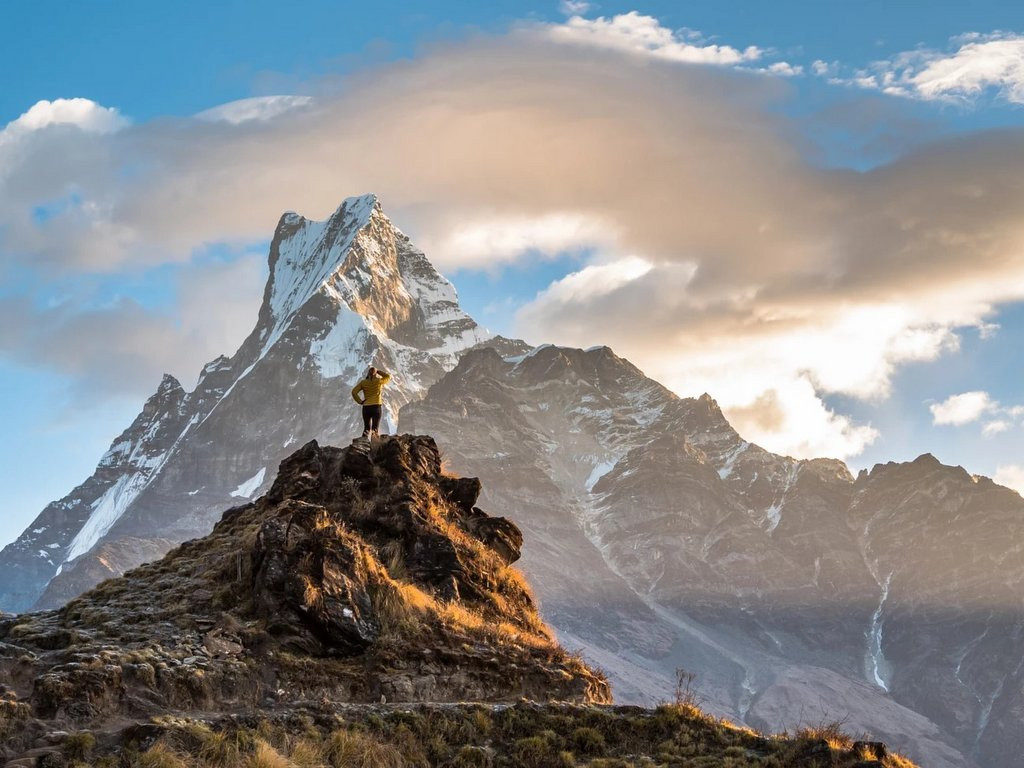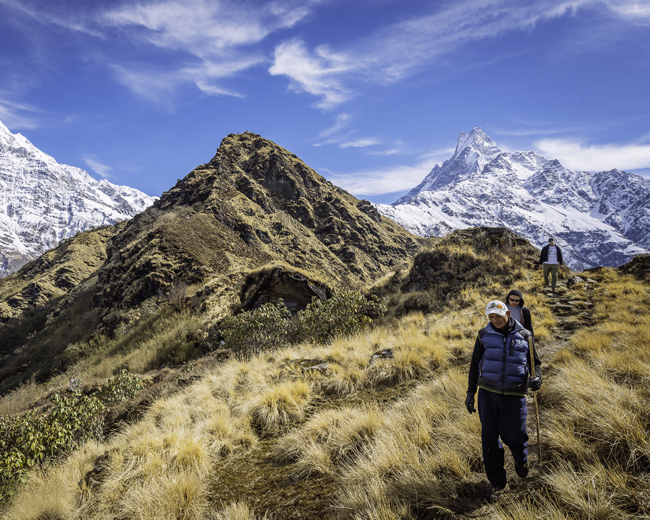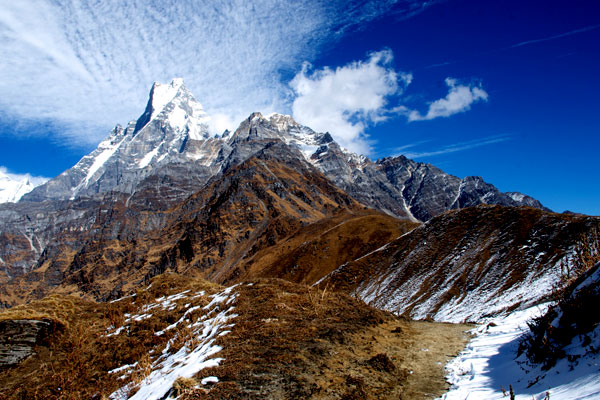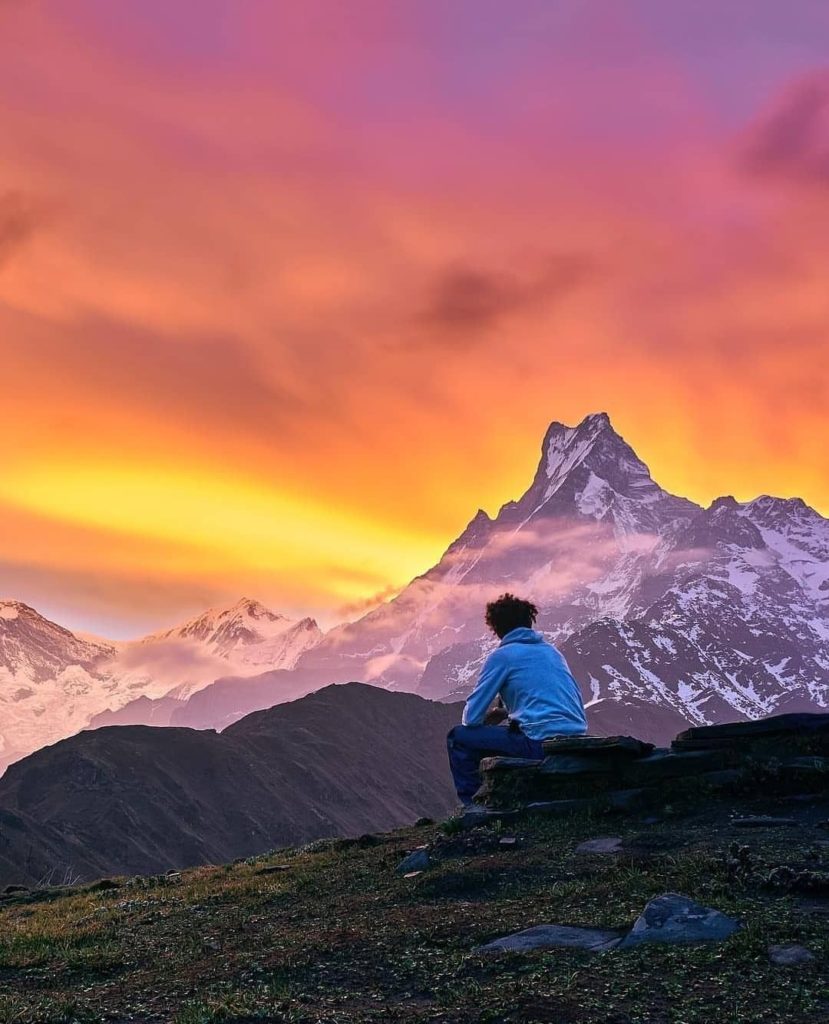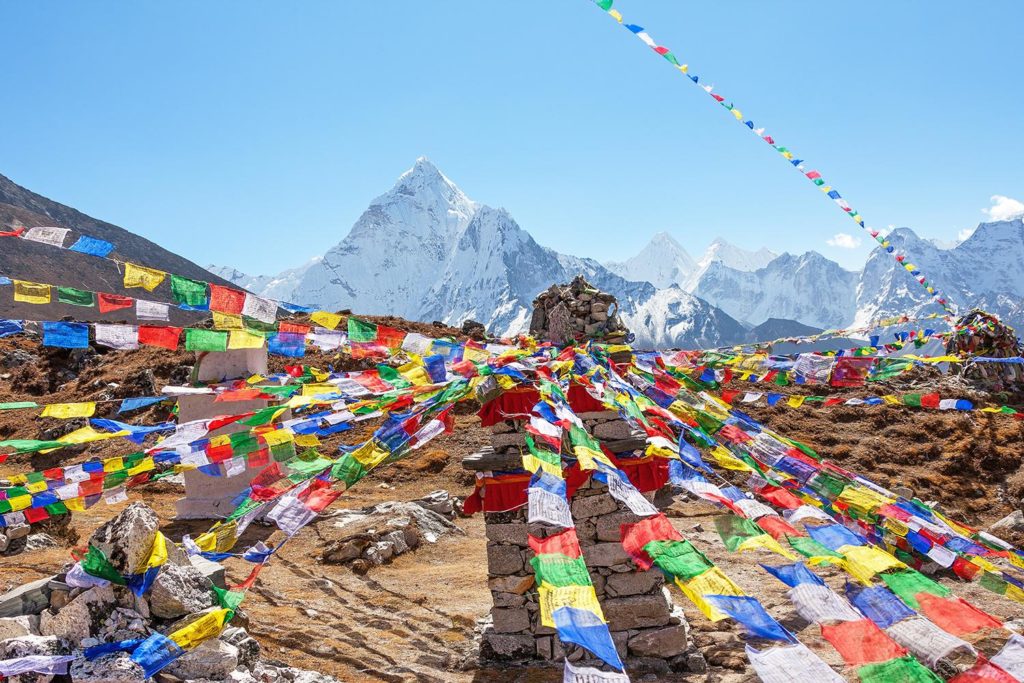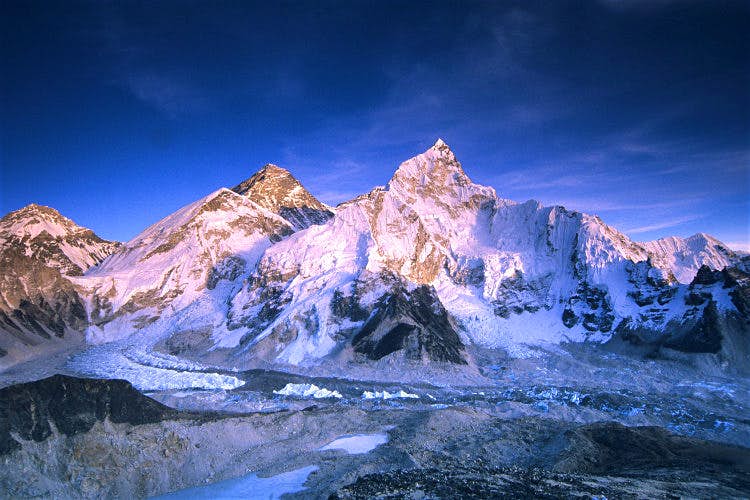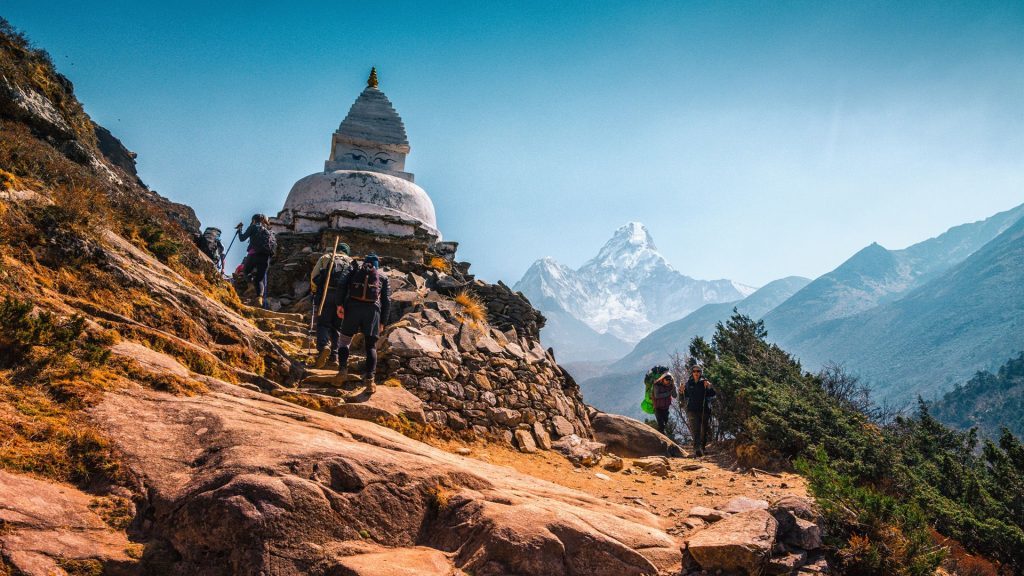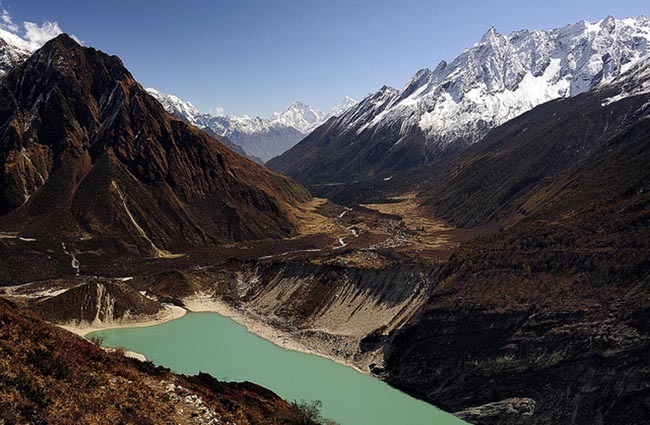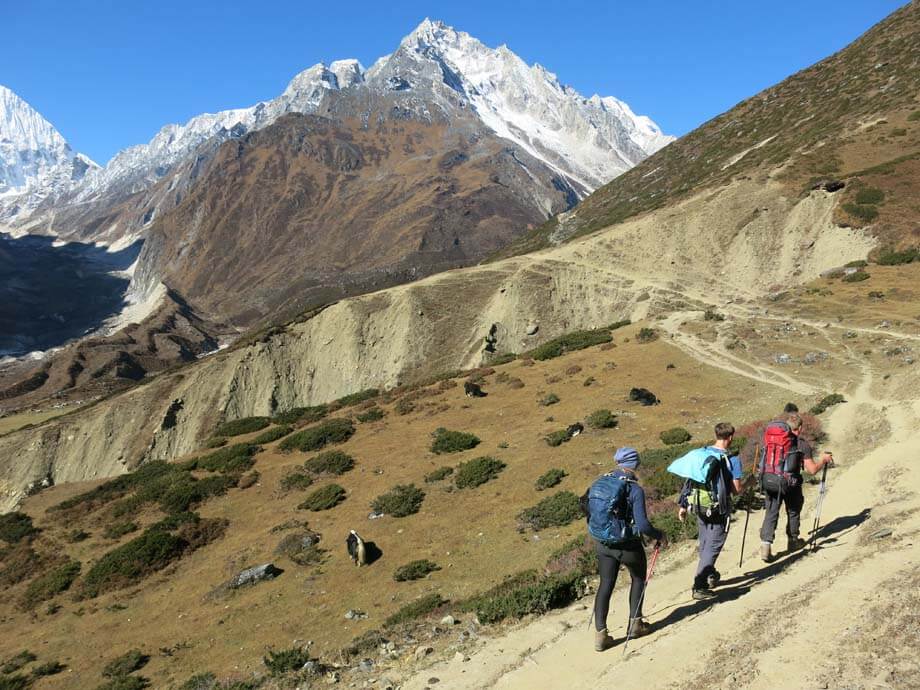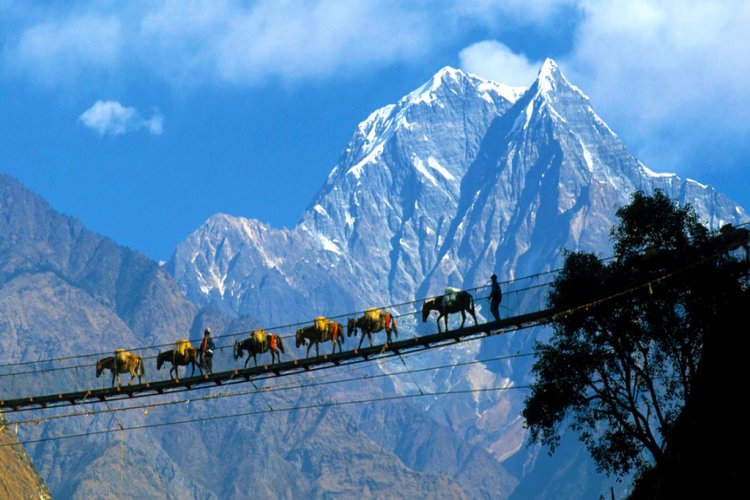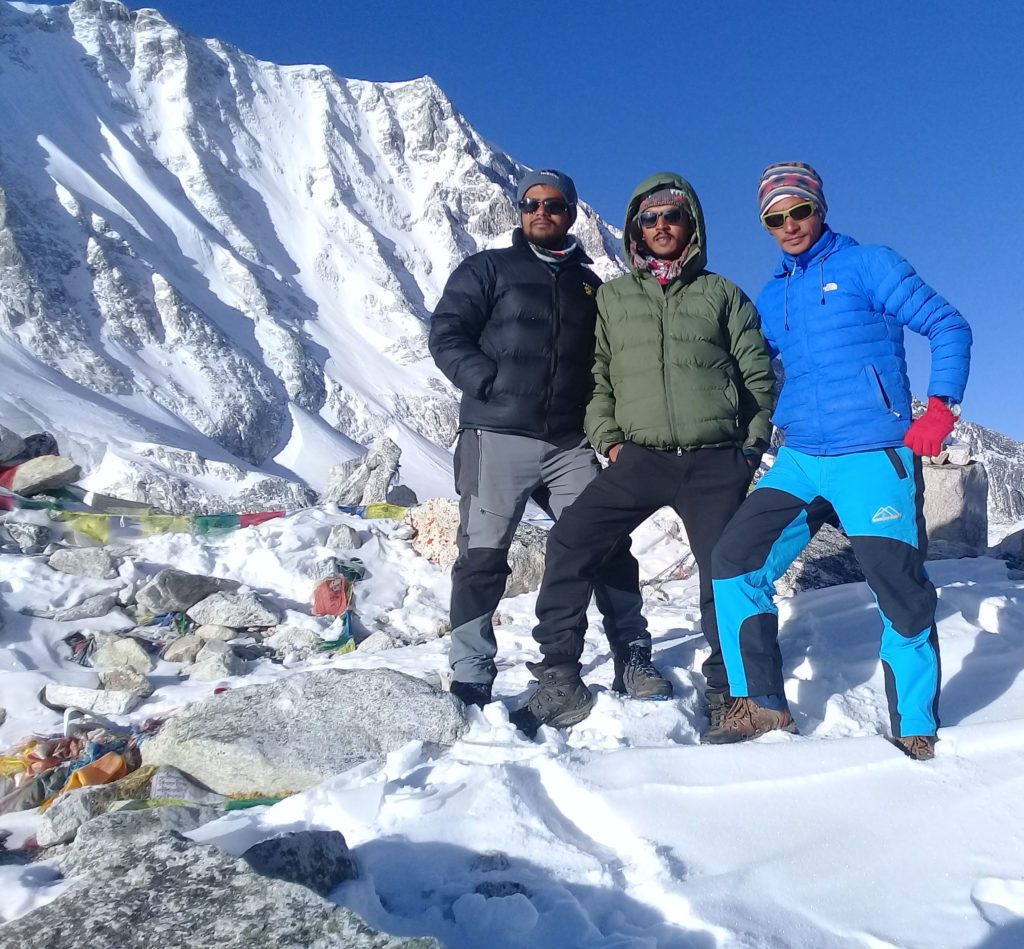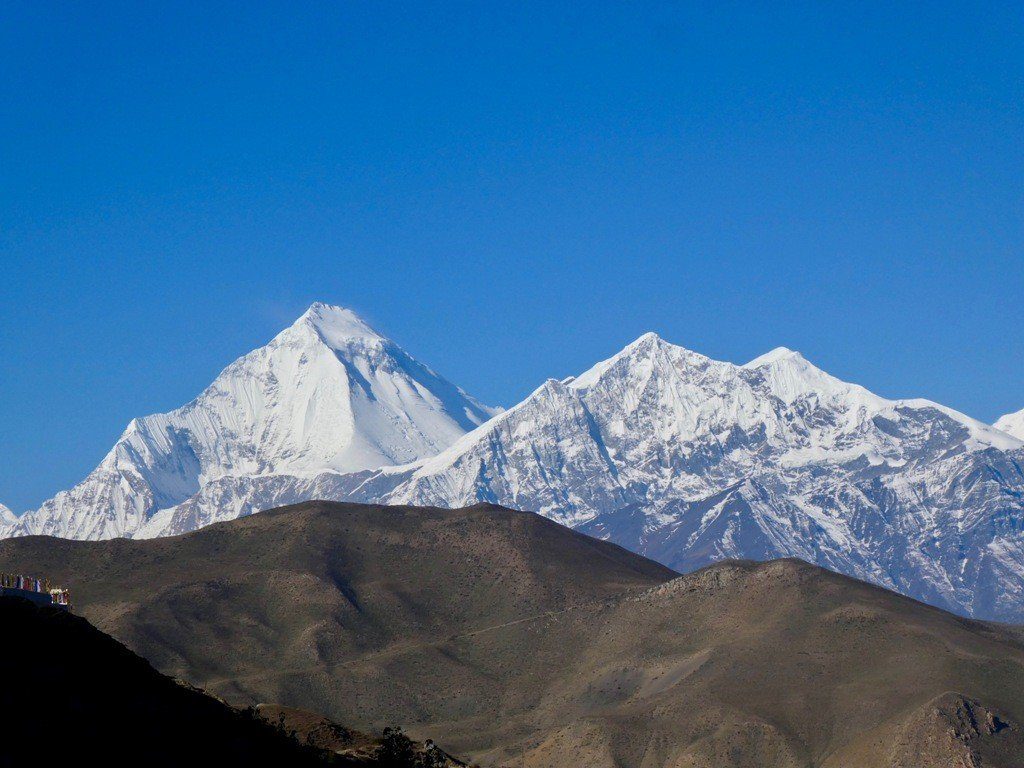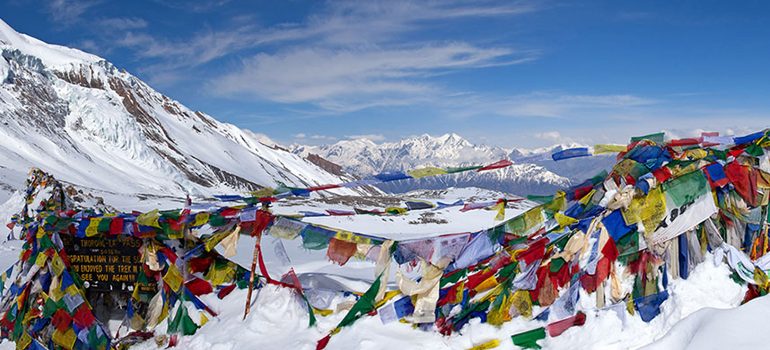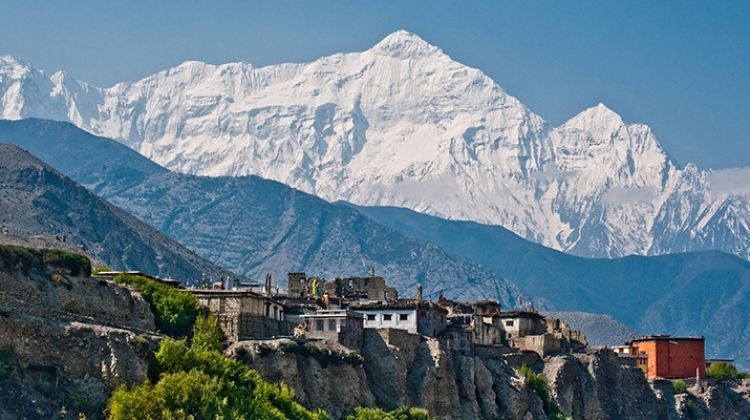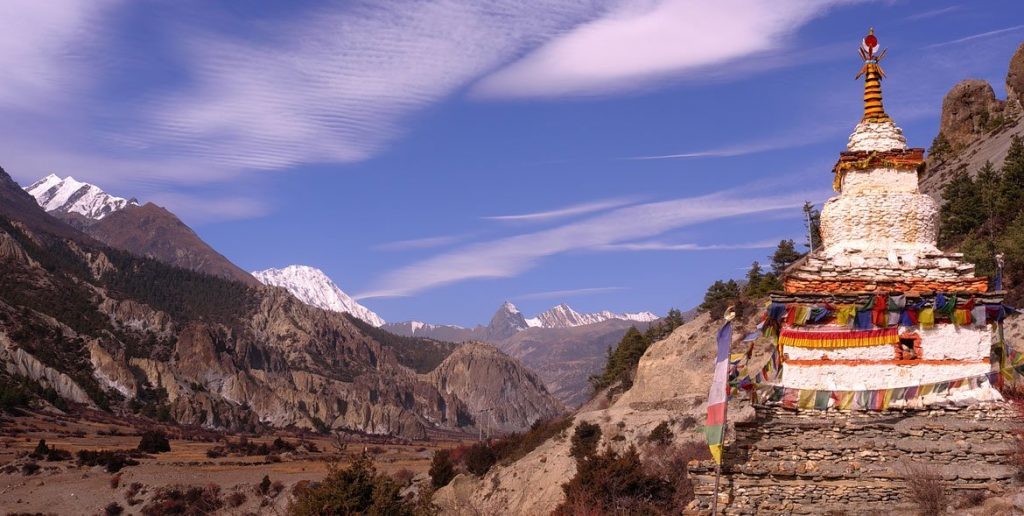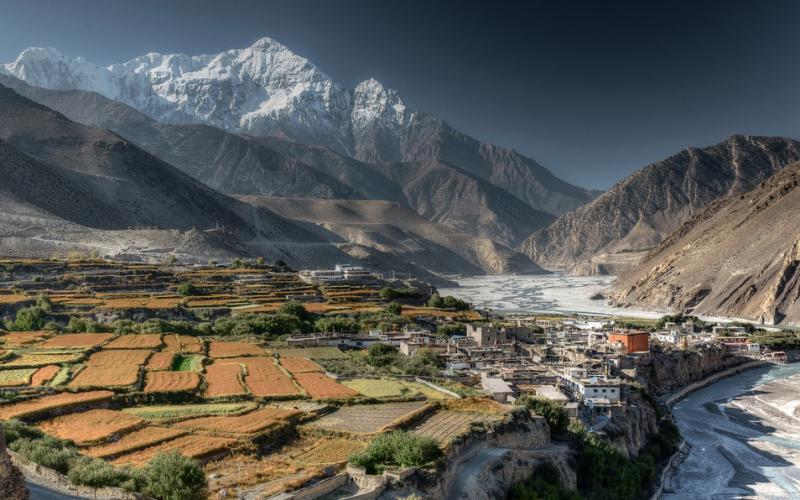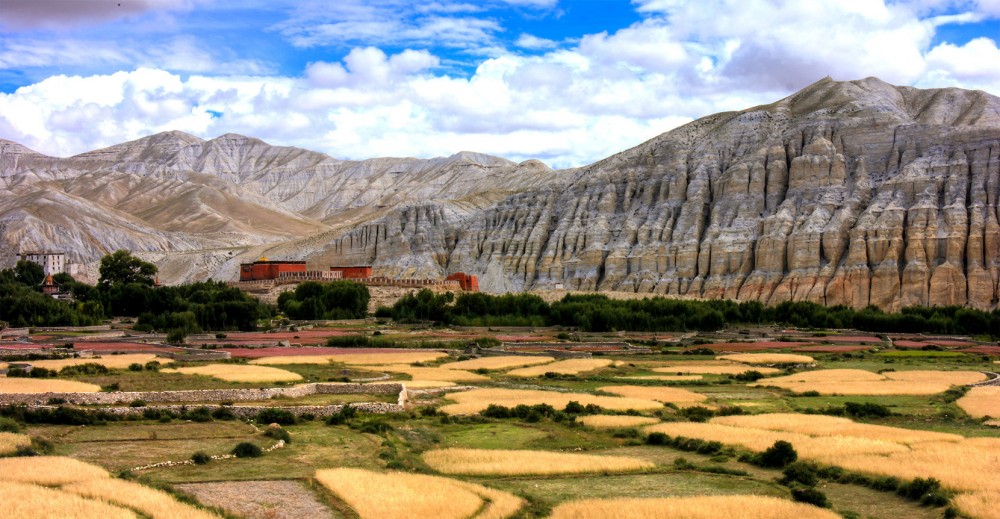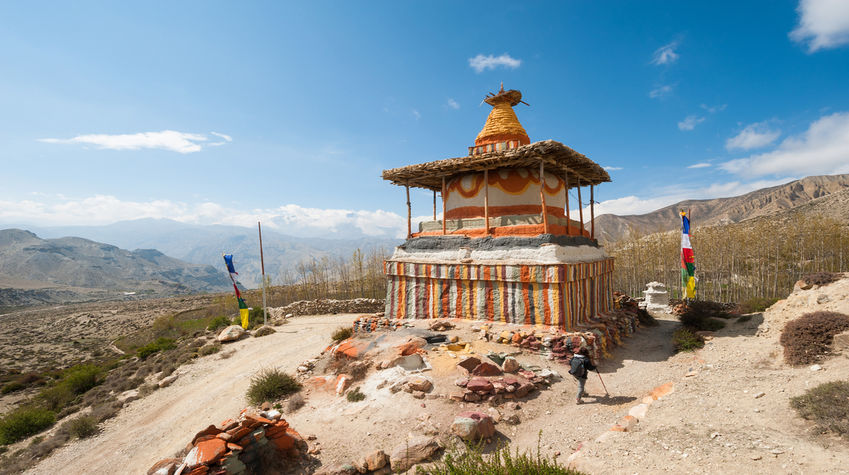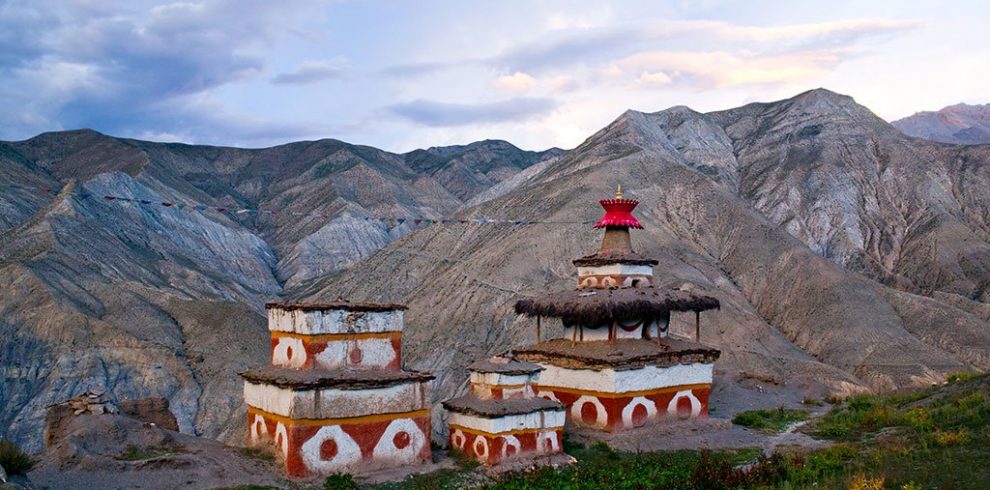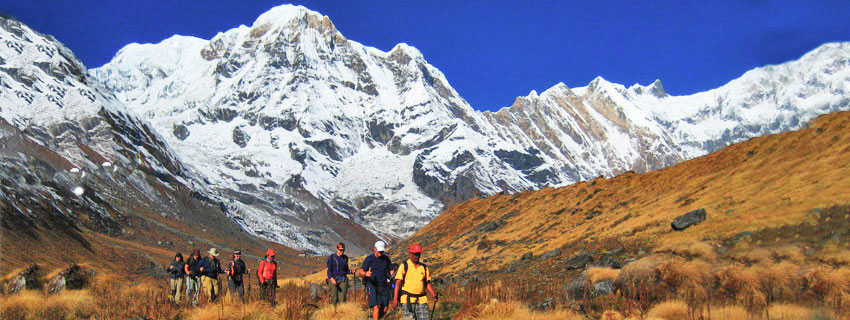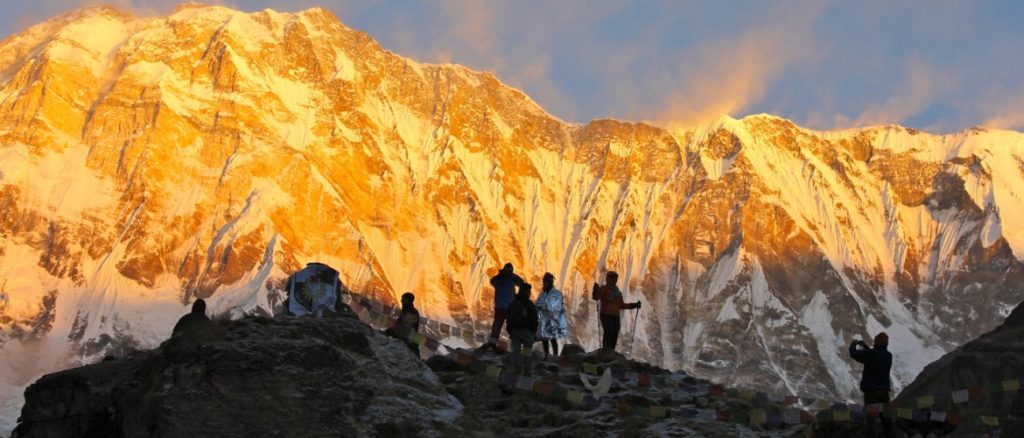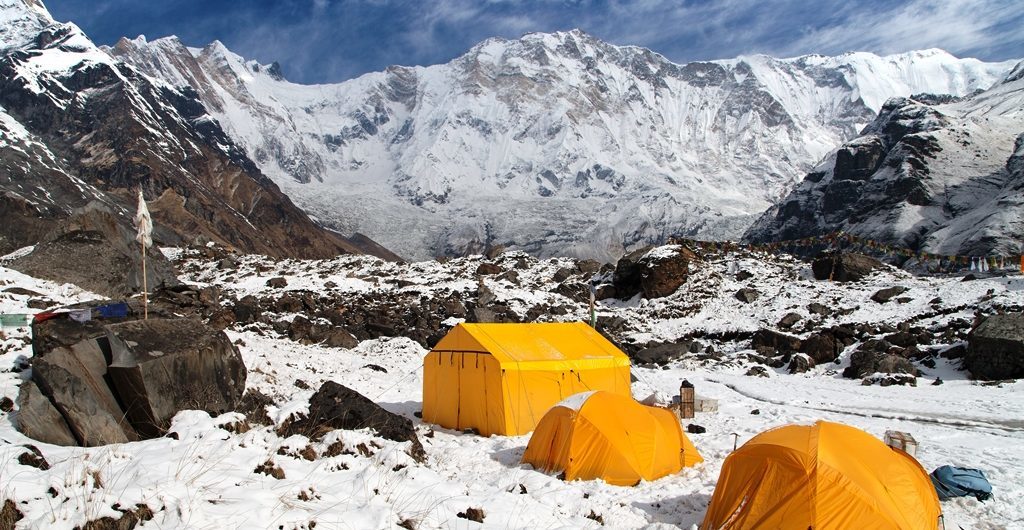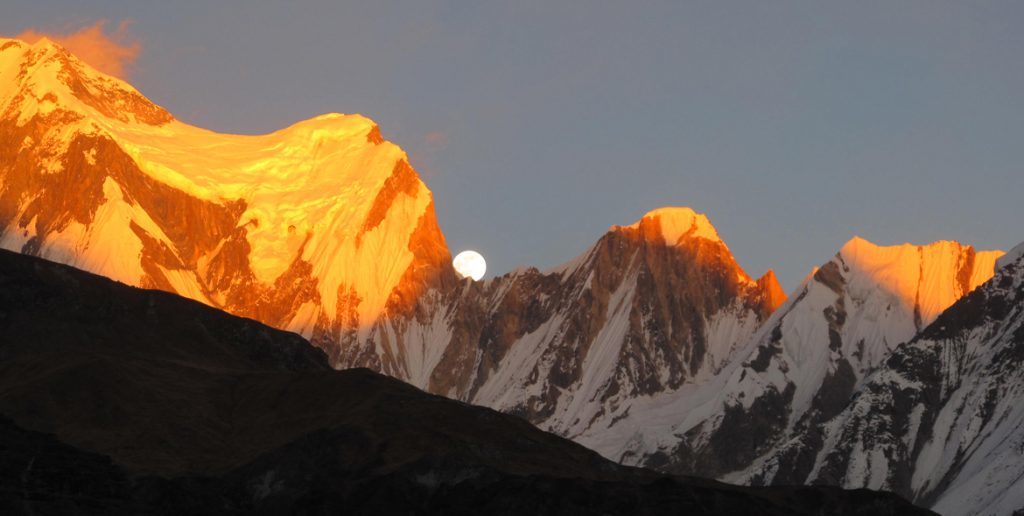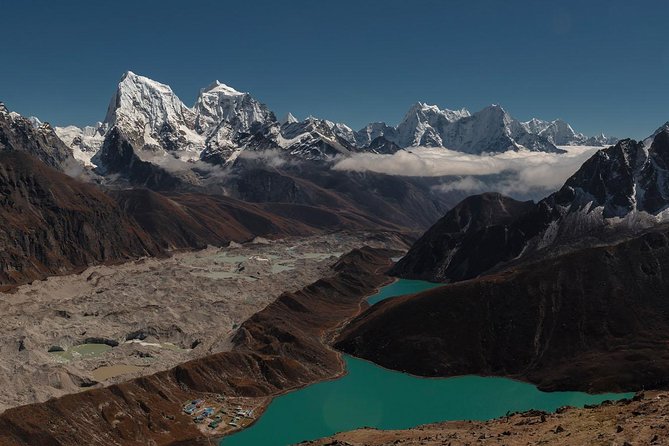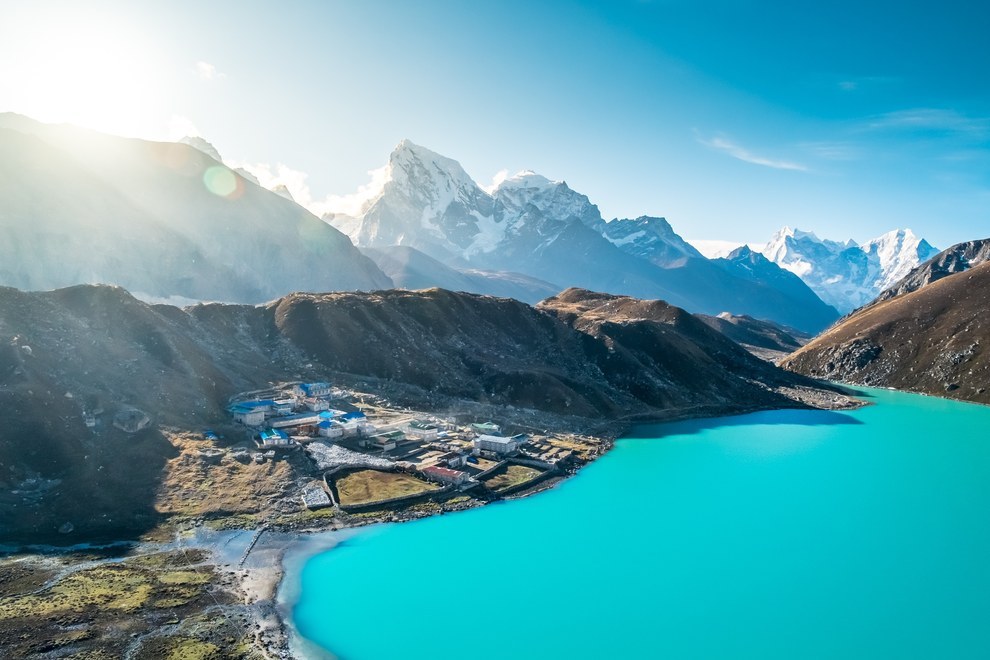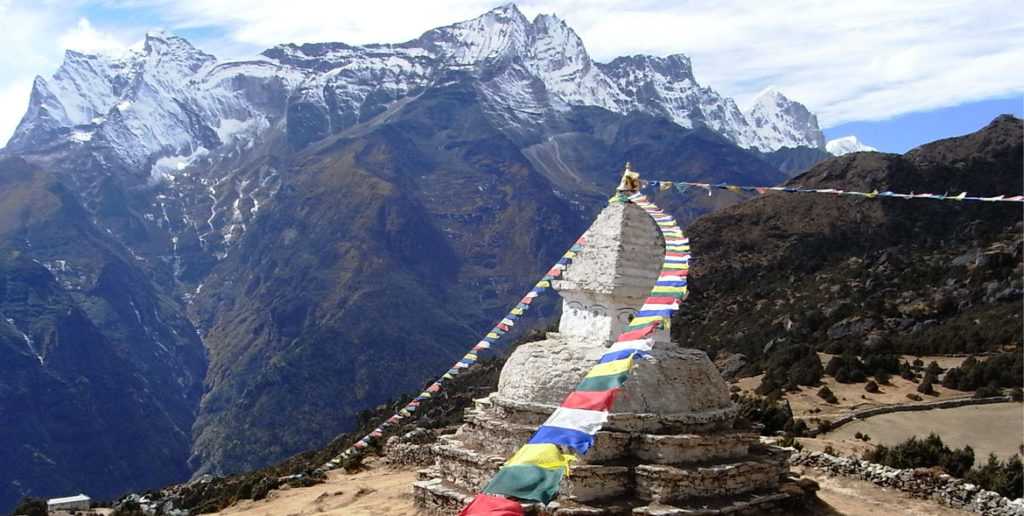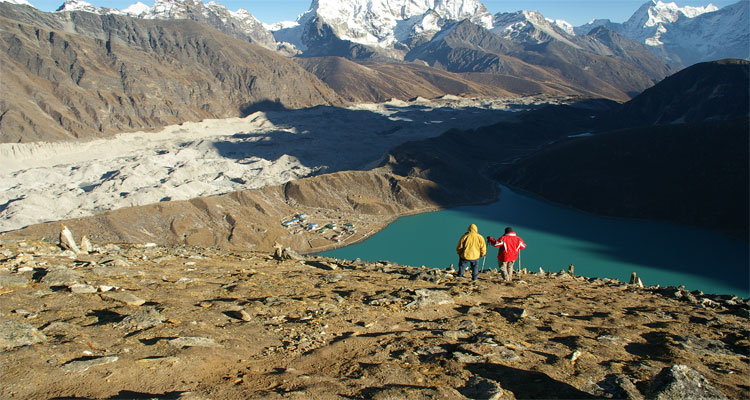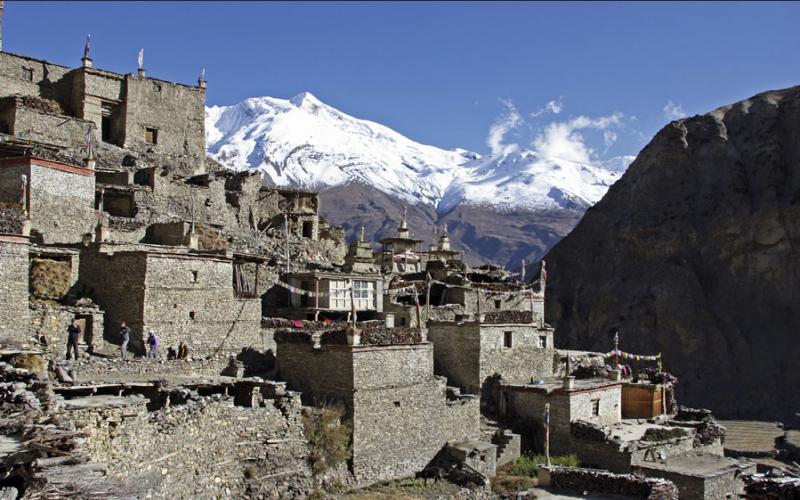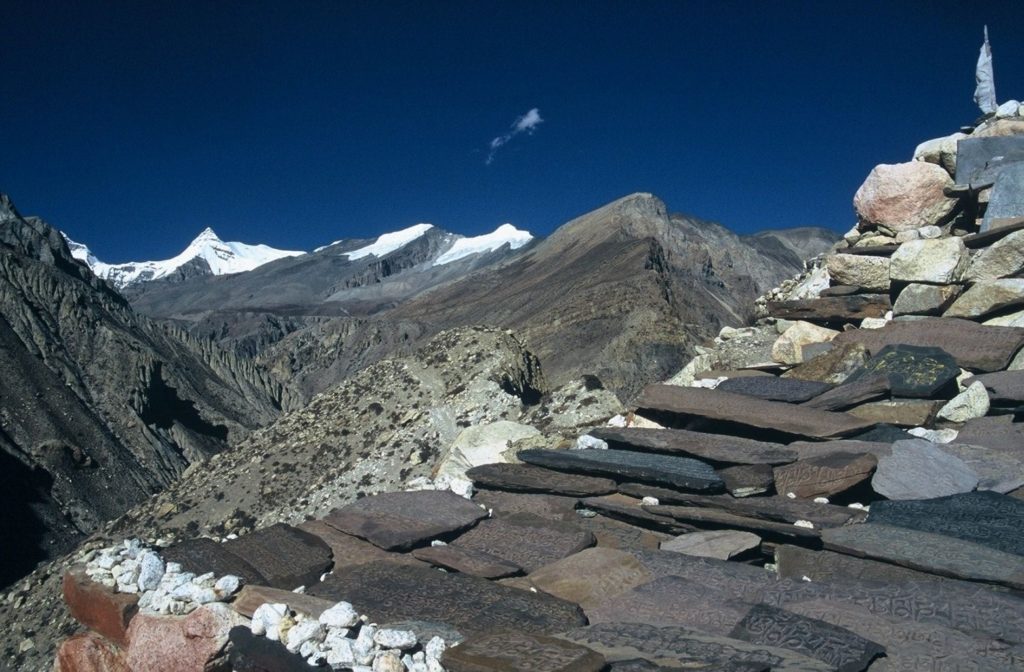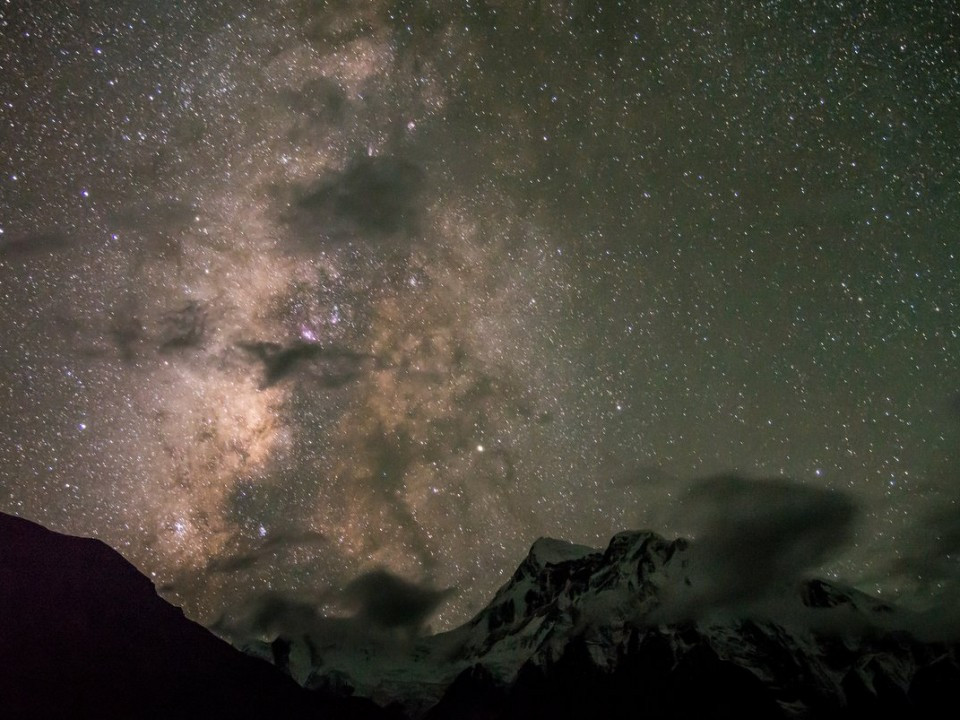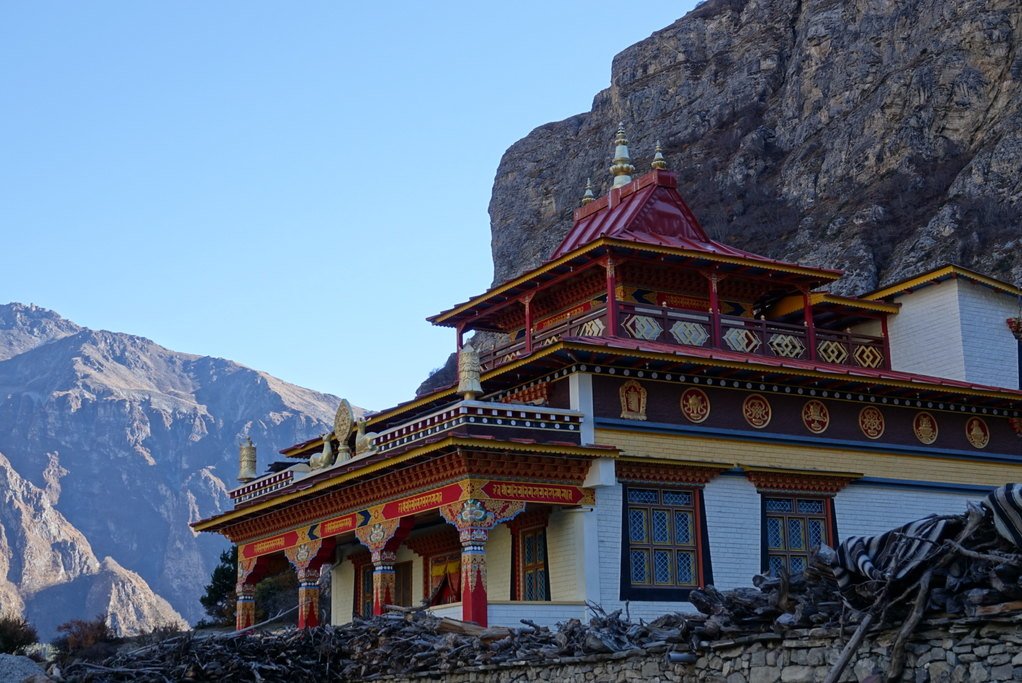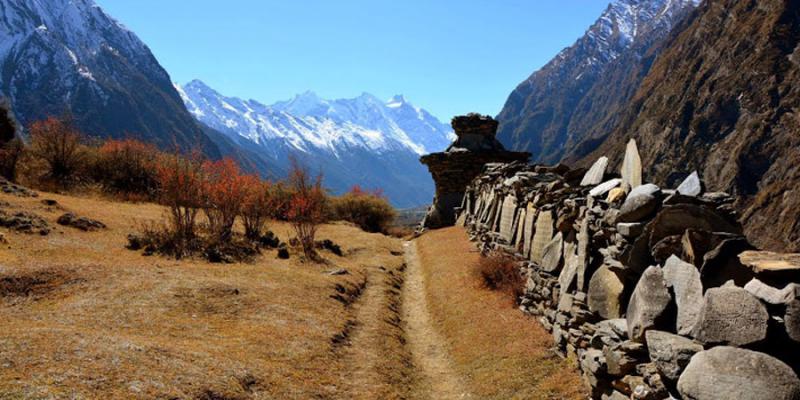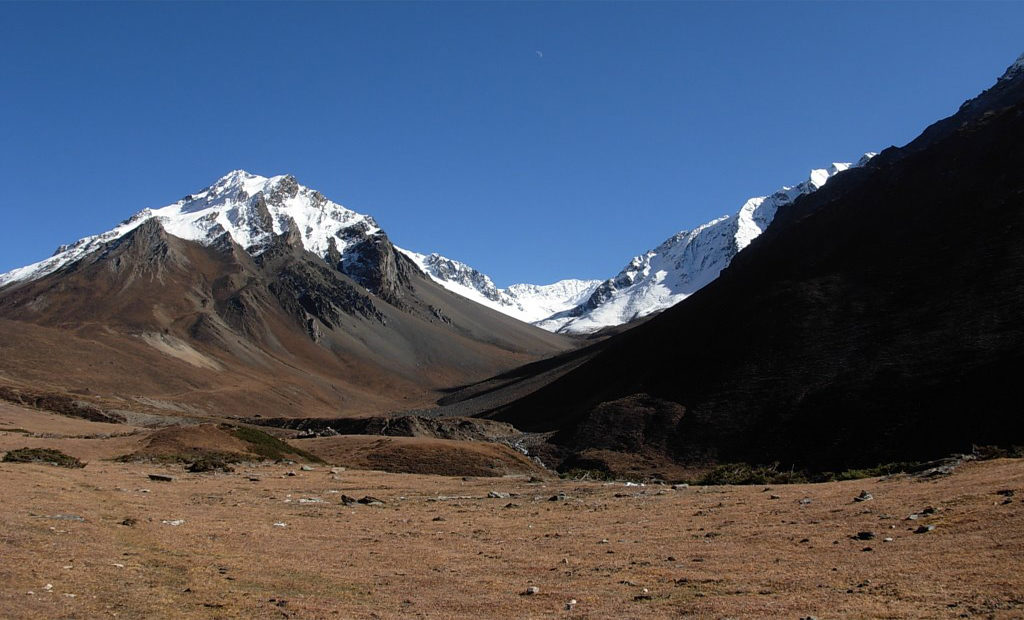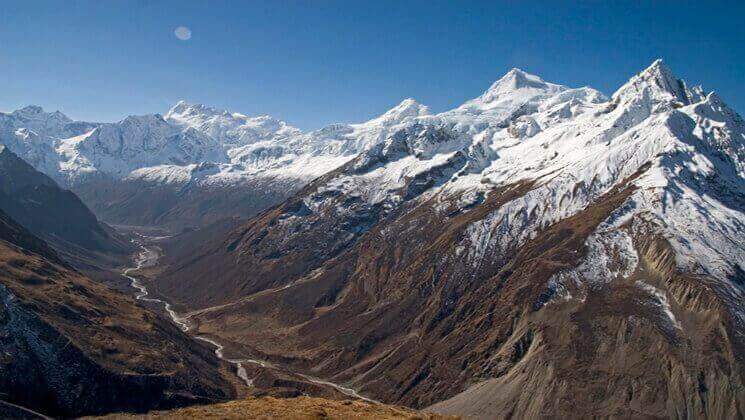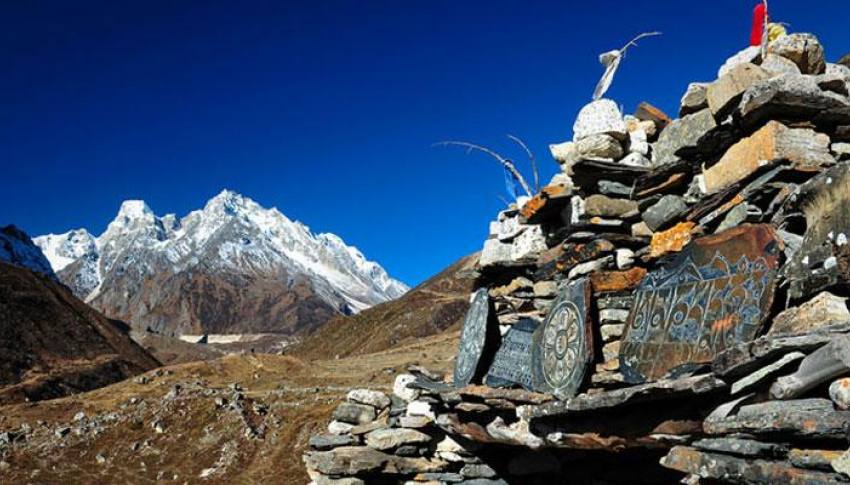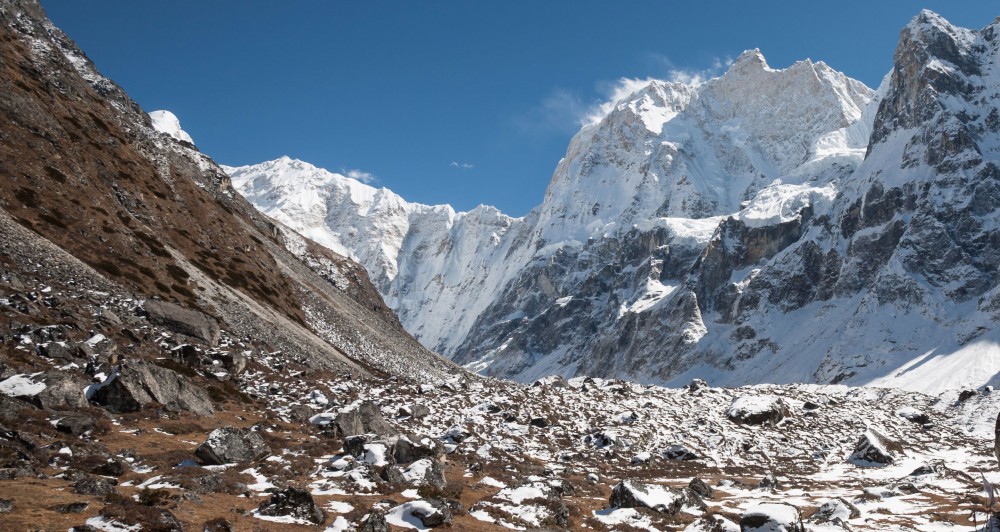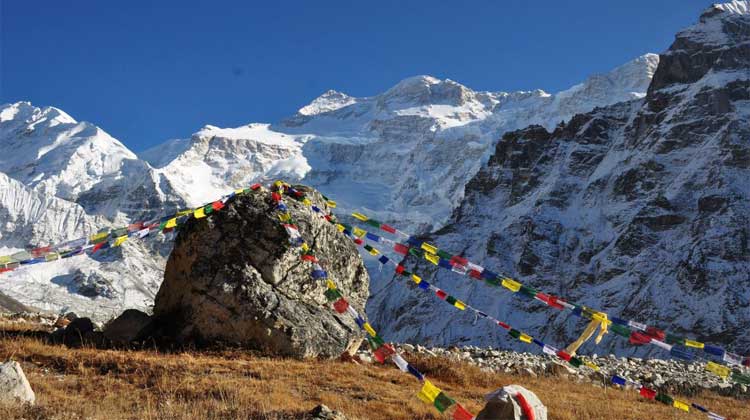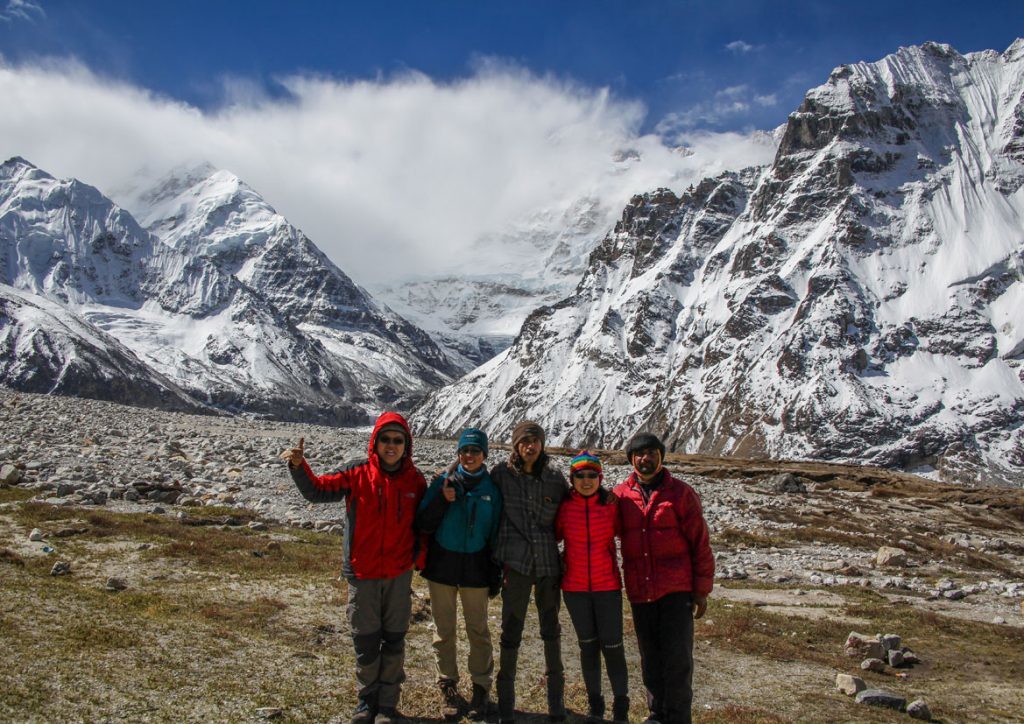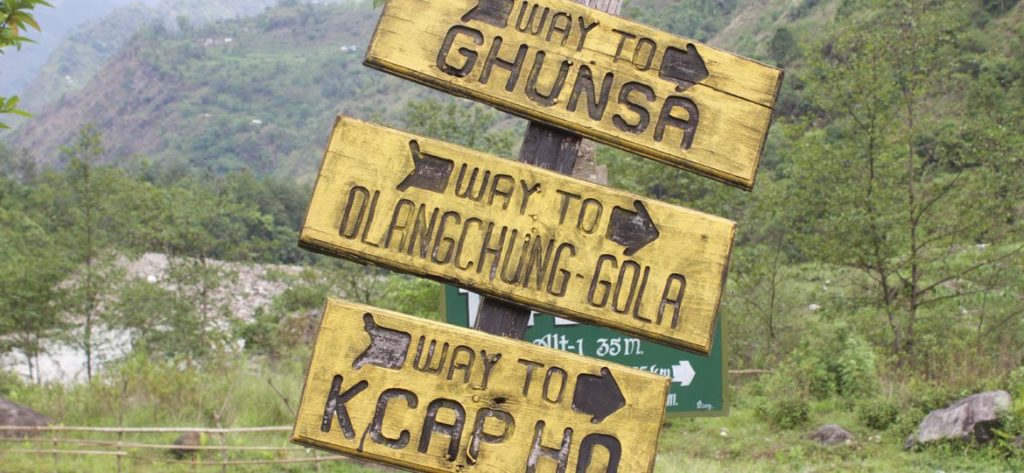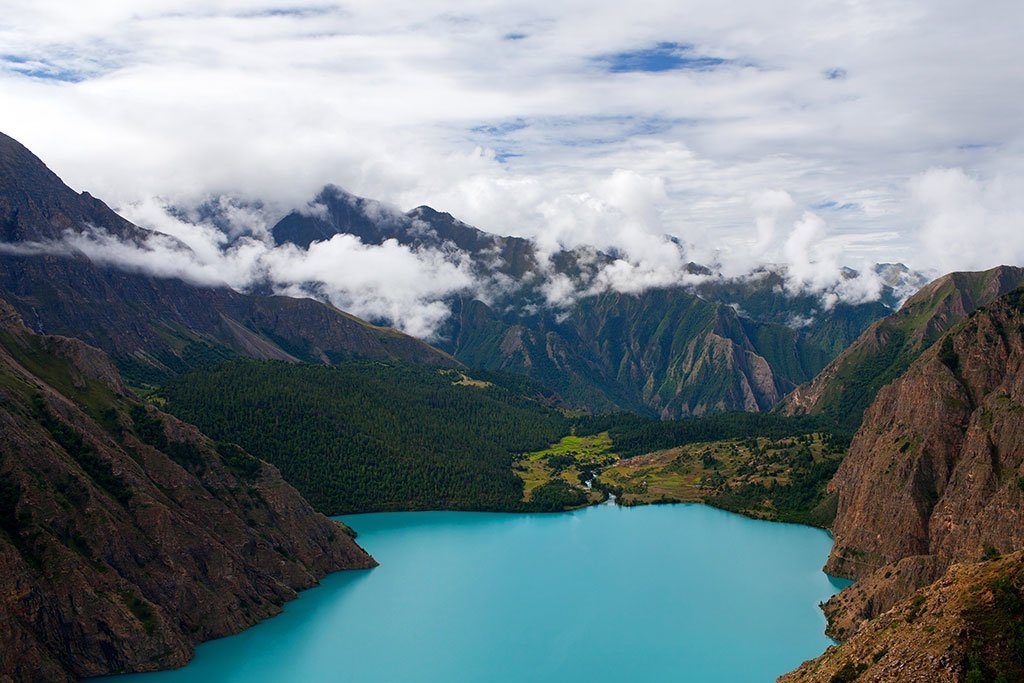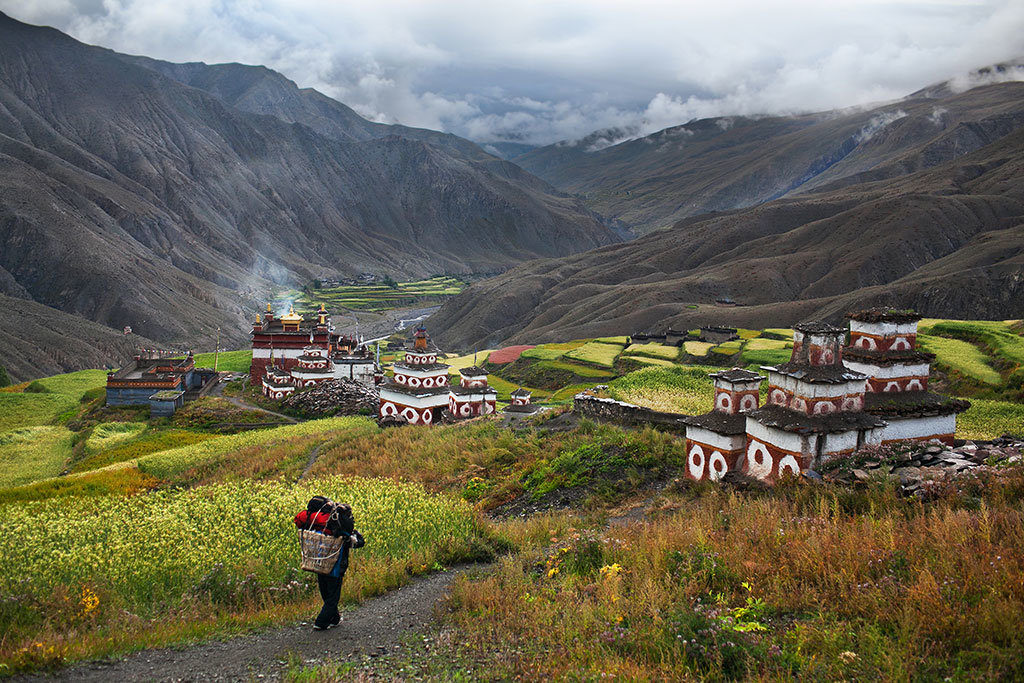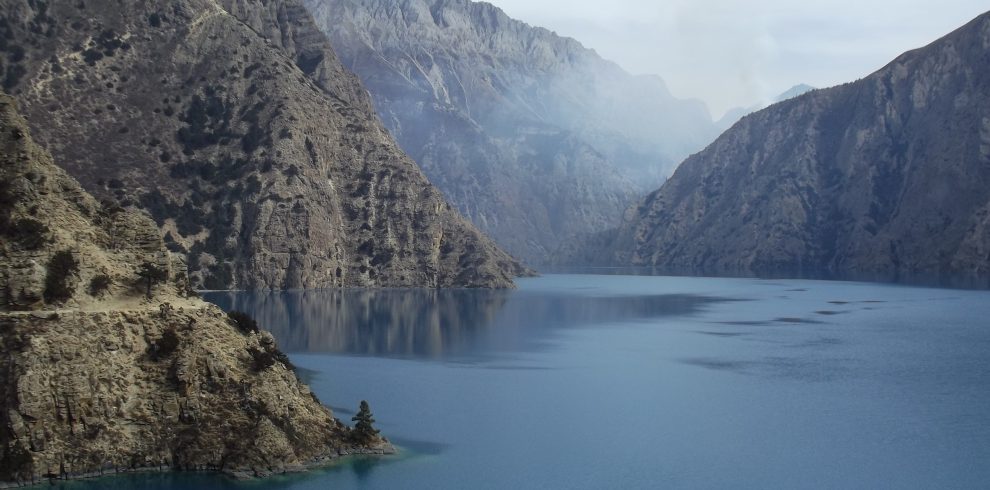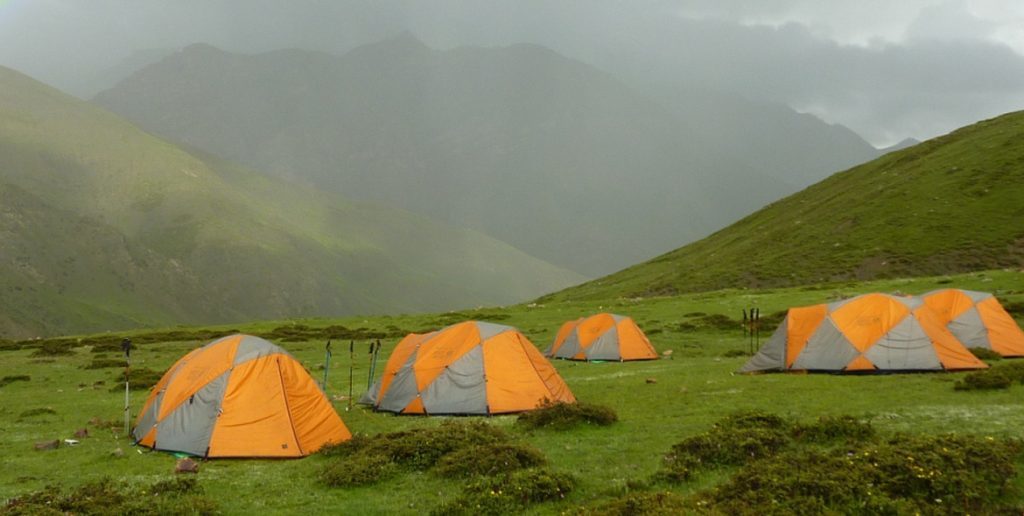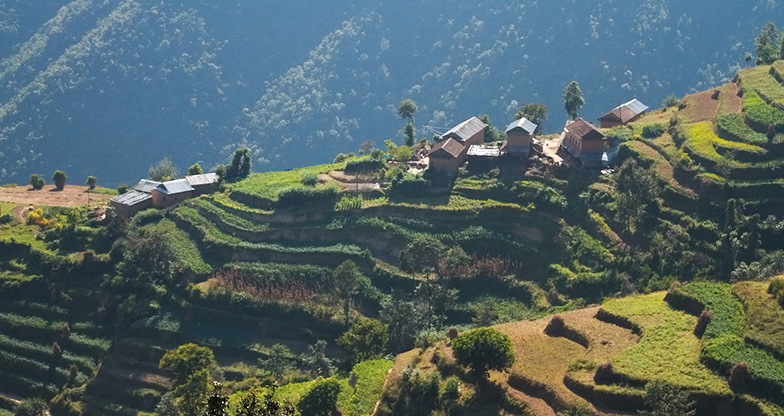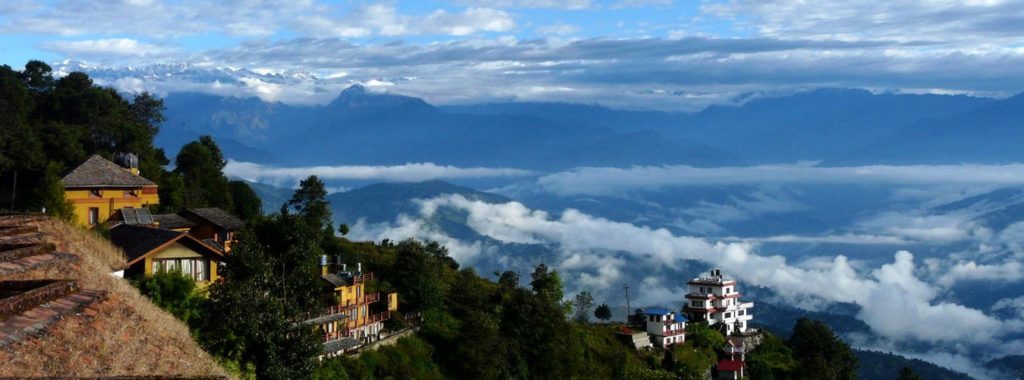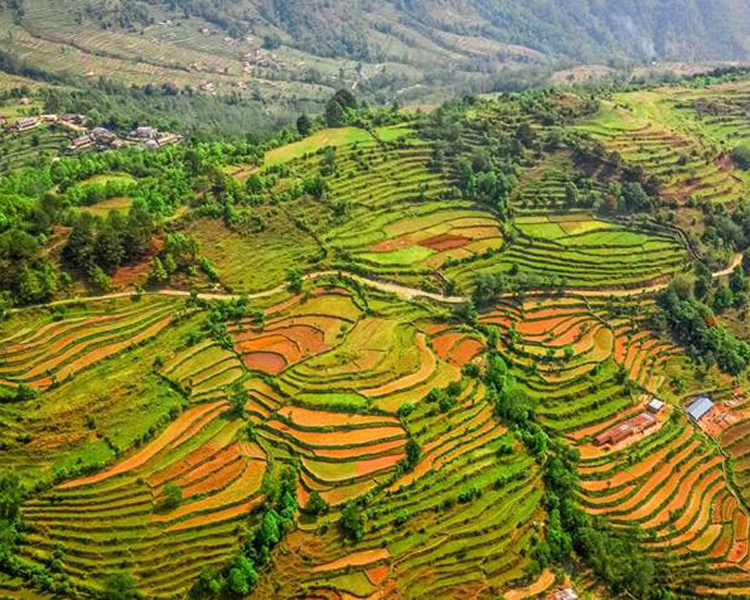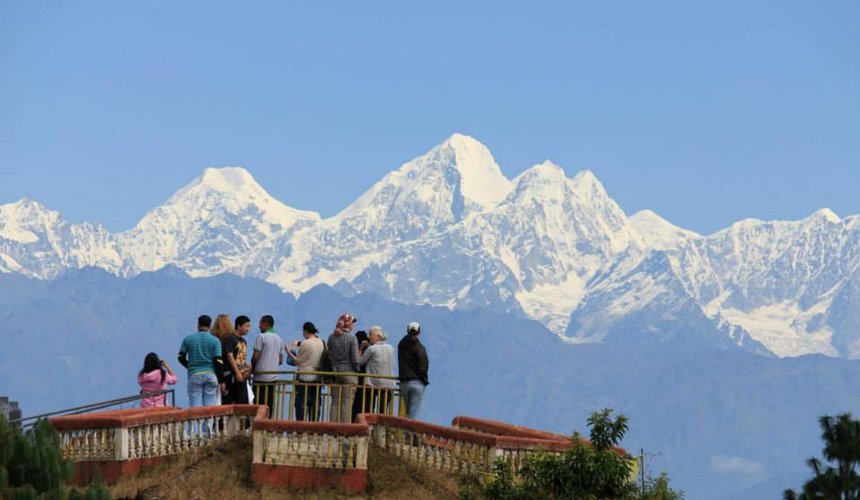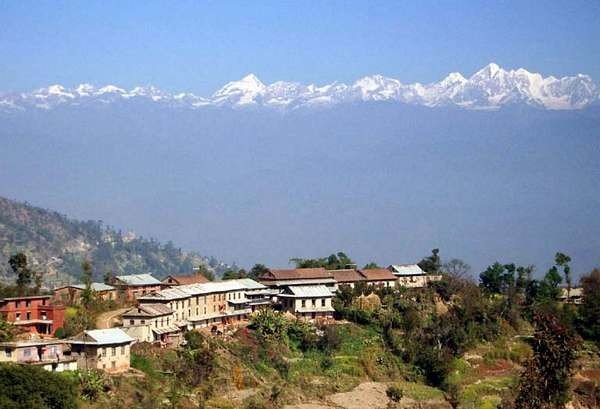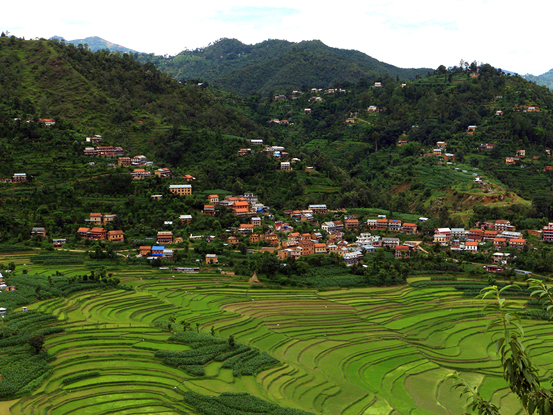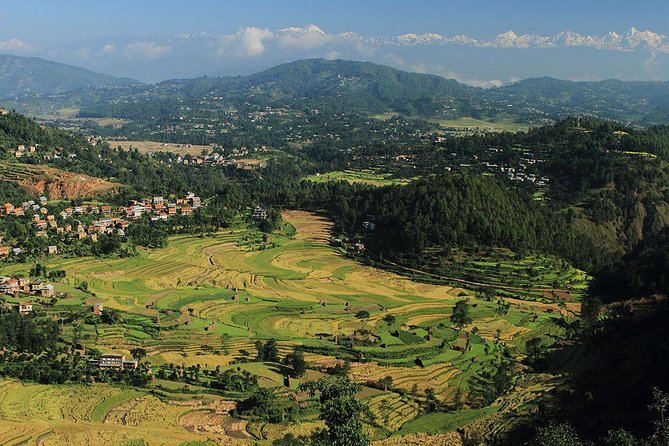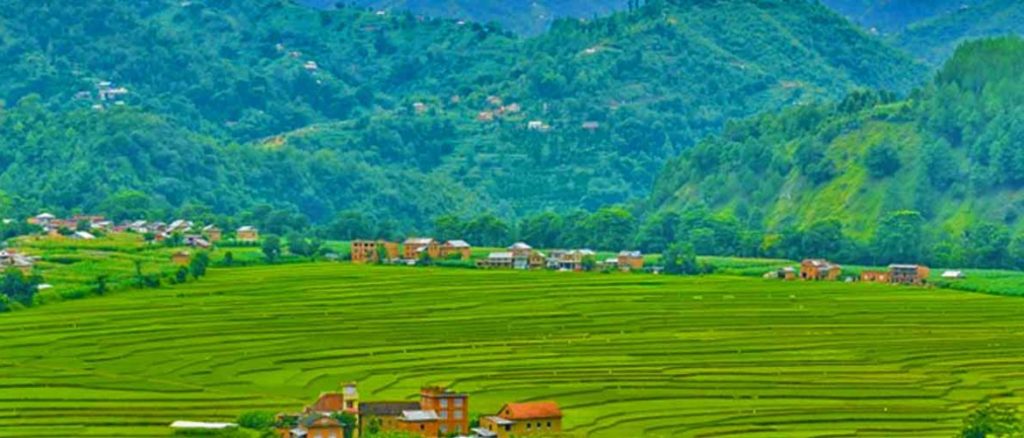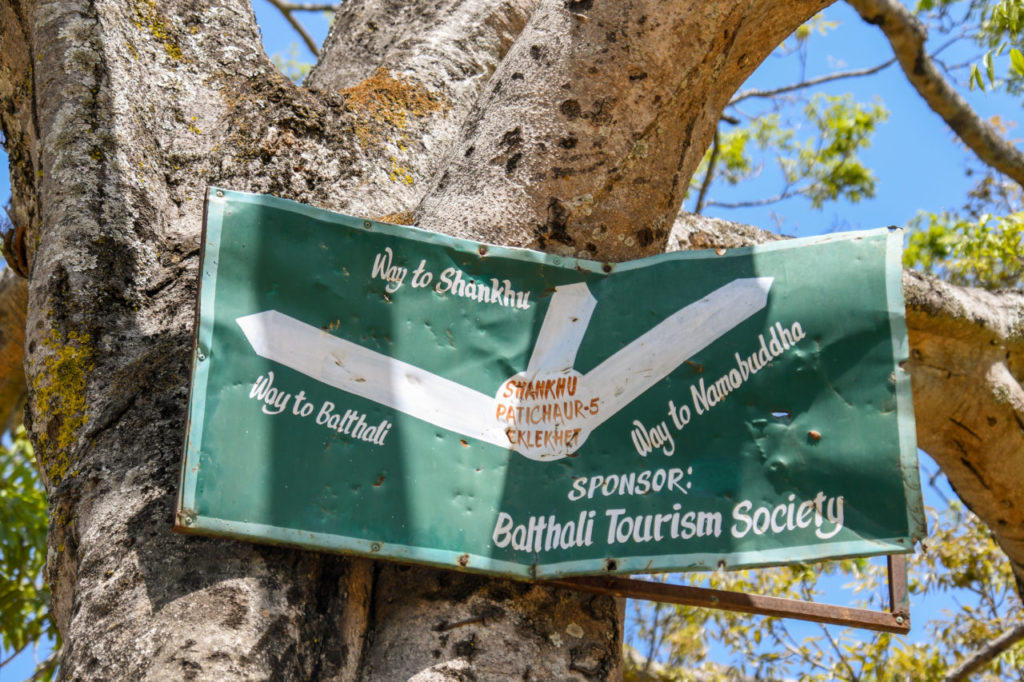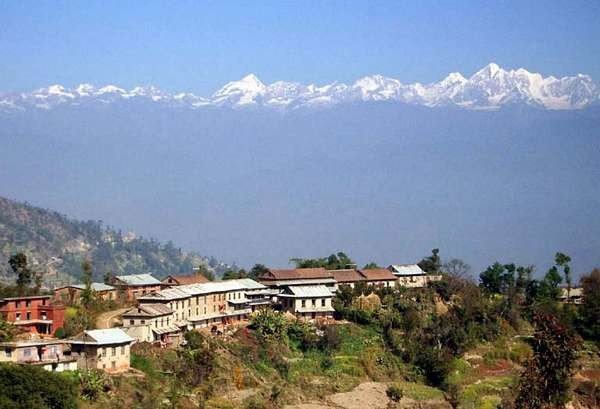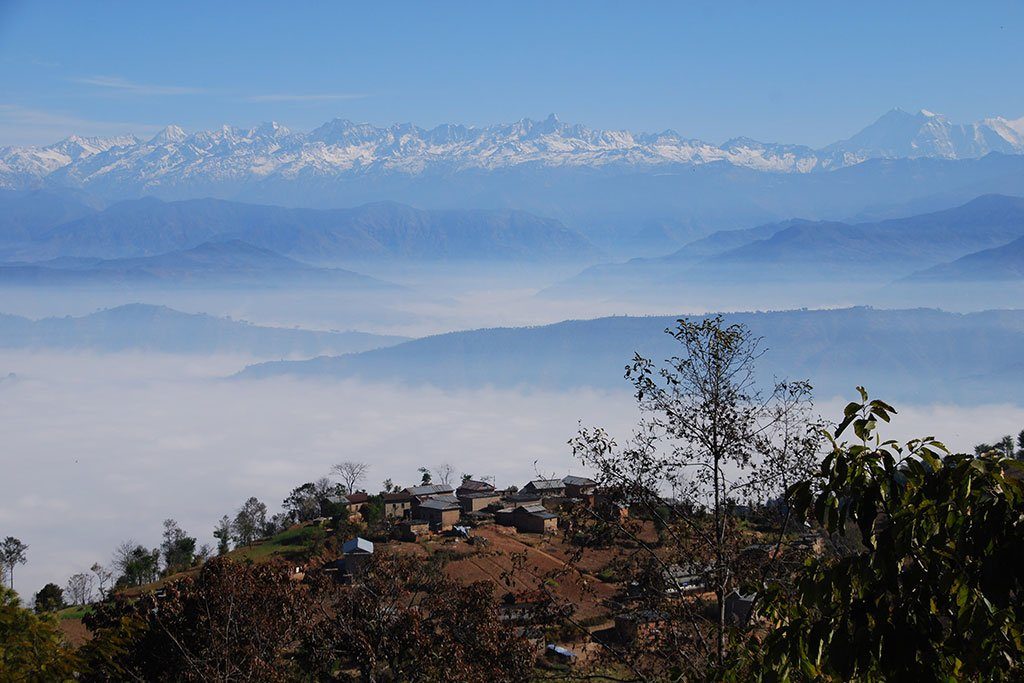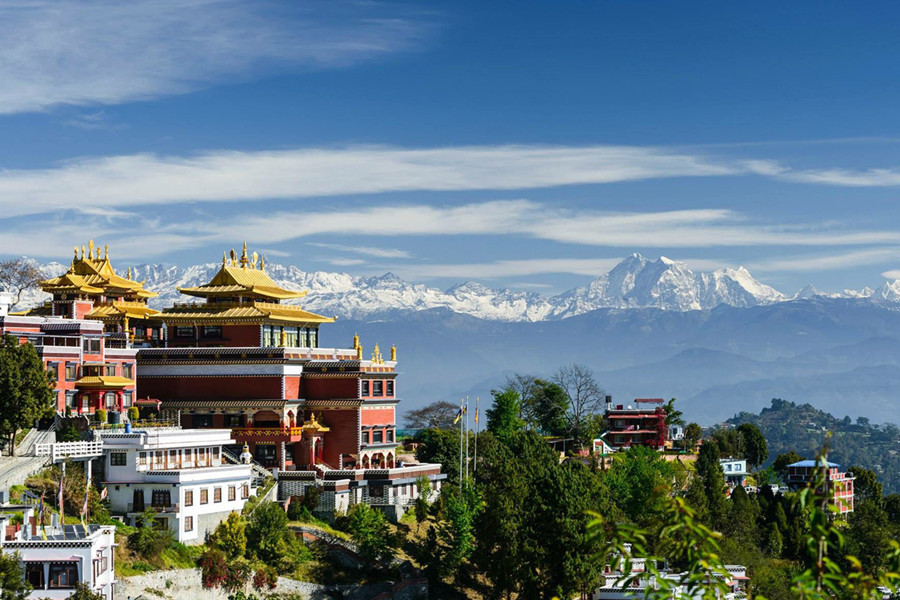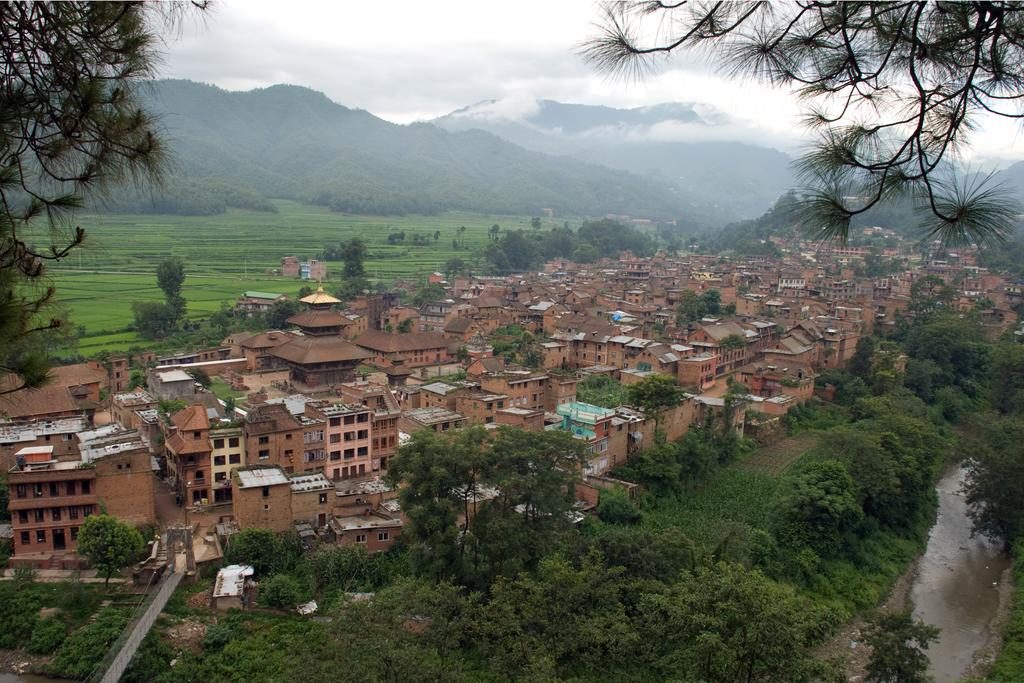With over 2,00,000 trekkers floating in every year, Nepal is home to eight of the world’s tallest mountains and innumerable treks.
Are you planning a trek in Nepal? Are you still in the research phase? Well then, you have reached the right place!
I have collated a list of Top 15 Treks of Nepal based on multiple factors including the time involved, the difficulty levels and the increase of the number of trekkers. What’s more, is that I have listed the highlights and lowlights of the trek. It shall help you make a choice amongst the Top 15 adventurous treks of Nepal.
Basis the time you have spared for your travel, pick one and trek one.
So, let’s help you learn about the Top 15 treks in Nepal so that you can plan your travel better and in-time. Here you go!
One Week Trek
1. Langtang Trek
| Maximum Elevation: | 4,984 meters, Tserko Ri |
| Trek Duration: | 7 days |
| Trek Category: | Moderate |
| Accommodation type: | Teahouse |
| Best Season: | March- May, and October- November |
| Trek Restrictions: | NO |
| Trek Permits: | Langtang National Park Permit |
The Langtang trek is in the North of Kathmandu and also in proximity to Kathmandu. It is famous for alpine meadows, outstanding mountain panorama landscape. and Kinjim Gompa, a famous Buddhist Monasteries.
It is at the maximum elevation of 4984 m provides some breath-taking views from the Tserko Ri and Kyanjin Ri.
Langtang trek can be done in 7 days. You can also extend your trek towards Gosaikunda lake and then finish the trek in Dhunche where you can then get a bus or jeep to Kathmandu. If you choose to take this route, the trek shall be around 10-12 days in total.
Highlights of Langtang Trek
- Experience of the Langtang National Park while trekking through can give you a chance to get some clicks with the mules, langurs, red panda, etc.
- The trek provides an experience of the monasteries and old villages surrounded via Rhododendron forests, bamboo dense and terrace farming.
- Sunrise from Tserko Ri
Lowlights of Langtang Trek
• Although quite a rare happening – there have been times when the trails have become inaccessible due to landslides in the raining season
FAQs of Langtang Trek:
Can Langtang trek be done is less than 7 days?
Yes, you can do it in less than 7 days. However, we don’t recommend it unless you have a very good hiking experience.
How hard is this trek?
The difficulty level is Moderate.
What is the best time to do this trek?
Autumn (September to Mid December) and Spring ( March to May) are the best seasons to trek.
What are the permits required for this trek?
Langtang National Park Entry Permit.
Do you advise to do this trek without a guide?
Yes, it can be done without a guide. The trail is well marked. However, I don’t recommend to do it without a guide if you don’t have prior hiking experience.
How high do we get on this trek?
You reach an altitude of 4,984m, Tserko Ri
Does this trek require camping?
Accommodation is available throughout the trail. Camping is not required. However, if you want you can camp further from Kyanjin Gompa and/or cross the Ganja La Pass and spend 3 days camping
Any way to book accommodation in advance?
The usual way is to walk up and find a lodge. Guides usually call lodge owners but it is not possible to book in advance.
2. Ghorepani Poon Hill Trek
| Maximum Elevation: | 3210 meters, Poonhill |
| Trek Duration: | 7 days |
| Trek Category: | Easy |
| Accommodation type: | Teahouse |
| Best Season: | March- May, and October- November |
| Trek Restrictions: | NO |
| Trek Permits: | TIMS, ACAP |
A classic short trek is popularly known for the sunrise over Annapurna and Dhaulagiri Range, which also provides you the experience of beautiful villages of Ulleri and Ghandruk.
You can also see dense, alpine Rhododendron forests and panoramic views from Poon Hill of famous peaks of Nepal namely the Dhaulagiri, Annapurna I, Nilgiri and Annapurna South.
You can experience the lifestyle and culture of locals the Gurungs and Magars in the delightful villages.
This trek can be shortened or lengthened as per time availability. Well, it surely is going to be an astounding experience.
Highlights of the Ghorepani Poon Hill Trek
- Sunrise view from Poonhill
- Splendid and spectacular views of Dhaulagiri (8167M) and Mount Annapurna I (8091m) and others Himalayan snow peaks.
- One of the spectacular sights on the Poon Hill trek, Gurung Village at Ghandruk – the experience of Gurung culture, Gurung dresses and Monastery.
- Easiest short trek to experience and fall in love with nature.
Lowlights of the Ghorepani Poon Hill Trek
- Most of the trail is stairs. If you hate stairs, it might not be a good choice for you
- Huge traffic of trekkers during peak season – March to May and October to November is sometimes nerve-wracking and irritating and distracts one from wilderness trekking.
FAQs of Ghorepani PoonHill Trek:
Is it possible to do this trek for less than 7 days?
Yes, you can do it in less than 7 days. However, we don’t recommend it unless you have a very good hiking experience.
How hard is this trek?
This trek is an easy trek.
What is the best time to do this trek?
Best season to trek would be when there is less snow or rain; September to November & March to May.
What are the permits required for this trek?
TIMS and Annapurna conservation entry permits
Do you advise to do this trek without a guide?
Yes, it can be done without a guide.
How high do we get on this trek?
The maximum elevation is about 3210m.
Does this trek require camping?
Camping is not required for this trek. You can stay in tea houses along the trail. If you want to stay in Poonhill for a night, you need to bring a tent.
Any way to book accommodation in advance?
There are plenty of places to stay. You cannot book ahead in advance and it is inadvisable too. It is easier to find accommodation.
3. Everest View Trek
| Maximum Elevation: | 3956 meter, Tengboche |
| Trek Duration: | 7 days |
| Trek Category: | Moderate |
| Accommodation type: | Teahouse |
| Best Season: | March- May, and October- November |
| Trek Restrictions: | NO |
| Trek Permits: | Sagarmatha National Park Permit, Local Permit |
To get a brilliant view of the Mighty Everest and experience the Sherpa way of life, this is trekking most suitable for amateur trekkers.
If you are short on time and can’t manage to reach Base camp, what would be best is to experience this trek which provides views of the famous Mt Everest, Makalu, and Lhotse peaks.
The trek starts from Lukla and you trek to UNESCO world natural heritage site the Sagarmatha National Park.
You can walk around the trading center Namche Bazaar and also get to experience Tengboche, Khumjung along your Route.
Highlights of the Everest View Trek
- Best view of Mt Everest and chance to experience the largest Tengboche Monastery
- Life and hospitality of Sherpas, amazing flora and wild fauna
- Thrilling flight to Lukla, one of the dangerous airport in the world.
Lowlights of the Everest View Trek
- The view of Everest but still Not Base Camp Trek.
- Extremely busy trail owing to the heavy number of trekkers trekking towards the base Camp
Can Everest view trek be done is less than 7 days?
Yes, you can do it in less than 7 days. However, we don’t recommend it unless you have very good hiking experience and fitness. We recommend having one day contingency day in case of cancellation of the flight.
How hard is this trek?
This trek is a moderate trek.
What is the best time to do this trek?
Best season is either pre-monsoon months of February, March, April, and Mayor late post monsoon time September, October, November, and December. However, having said that, this trek can be done throughout the year and if you don’t like crowd offseason June to August and January to February.
What are the permits required for this trek?
Sagarmatha National Park Permit, Local Permit
Do you advise to do this trek without a guide?
Yes, it can be done without a guide but it is always recommended to take one for a pain-free experience.
How high do we get on this trek?
The maximum elevation is 3867m.
Does this trek require camping?
Camping is not required for this trek
Any way to book accommodation in advance?
It can be booked in advance. It is highly recommended to book online via booking.com
Do we need an extra day for this trek?
I recommend allocating one or two extra days in case of cancellation of the flight.
4. Mardi Himal Trek
| Maximum Elevation: | 4,250 meters, Tengboche |
| Trek Duration: | 7 days |
| Trek Category: | Easy |
| Accommodation type: | Teahouse/Homestay |
| Best Season: | March- May, and October- November |
| Trek Restrictions: | NO |
| Trek Permits: | ACAP/TIMS |
If you are the one who wants to give a test to your fitness then head on to the uphill terrain to the foothill of Machhapuchhre.
It is diverse with amazing cultural insight and forest walks. The trail mostly along the ridge and altitude gain is gradual.
The trail goes through winding paths and rhododendron forests until you reach forest at an elevation of 3300m.
The views change into rugged mountain landscapes and provide views of Mardi Himal, Annapurna South, and Hiuchuli.
Highlights of the Mardi Himal Trek
- Off Beaten Track which is a mythical experience to explore the beautiful and untrodden trail
- Ascend towards traditional villages of Phedi, Pothana, Landruk, Shiding having their own cultural identity.
Lowlights of the Mardi Himal Trek
- Accommodation is fairly basic
FAQs of Mardi Himal Trek
Can Mardi Himal trek be done is less than 7 days?
The trek usually takes 7-8 days and can go up to 12 days.
How hard is this trek?
Mardi Himal Trek is a moderate level trek.
What is the best time to do this trek?
The best time is from March to May and September to Mid December. However, people prefer to do the trek all around the year.
What are the permits required for this trek?
Annapurna Conservation Area Permit and TIMS is required
Do you advise to do this trek without a guide?
Yes, it is advised to take a guide along on the trek.
How high do we get on this trek?
The maximum elevation is 4500m which is the Mardi Himal Base camp.
Does this trek require camping?
No, there are enough tea houses/homestay along the route.
Any way to book accommodation in advance?
Tea houses and Homestay are available, however, it’s difficult to book in advance, online options are not available.
Two Weeks Trek
5. Everest Base Camp Trek
| Maximum Elevation: | 5643 meter, Kala Patthar |
| Trek Duration: | 12 days |
| Trek Category: | Challenging |
| Accommodation type: | Teahouse |
| Best Season: | March- May, and October- November |
| Trek Restrictions: | NO |
| Trek Permits: | Sagarmatha National Park | Local Permit |
With spectacular mountain scenery, the trek to base camp will lead you through trails lined with many stones, beautifully engraved with Buddhist prayers.
The best trek as it is called provides views of famous Kala Pathar; you can have a sense of glory and pride, being closer than ever to the Mount Everest. You pass through pristine lakes, Dudh Koshi River, Buddhist Monasteries and Namche Bazaar.
The path of the Base camp is strenuous and glamorous but also the feeling of pride to walk on the trail of the great mountaineers is sure an amazing motivation.
Highlights of the Everest Base Camp Trek
- Option to a short hike to Kala Patthar, typically 300m over Everest at 5644m above sea level. Kala Patthar that provides the best viewing point of Everest Base Camp and surrounding peaks.
- You get to trek through Sagarmatha National Park which is an alpine rocky trail
- The base camp trek is home to a beautiful monastery, The Tengboche
- Walkthrough the famous Namche Bazaar
- The pristine Khumbu Glacier view will leave you breathless
Lowlights of the Everest Base Camp Trek
- Difficult to find accommodation for the last two days in Lobuche and Gorakshep, especially in Gorak Shep as they have only four teahouses until now.
- Crowded during the peak season
FAQS of Everest Base Camp Trek
Can Everest Base Camp trek be done is less than 12 days?
How hard is this trek?
The trek usually takes 12 days, with about 6 to 8 hours trek every day.
This trek is hard to strenuous trek.
What is the best time to do this trek?
Best season to trek Everest Base Camp is Mid-September to May. October is the most popular time.
What are the permits required for this trek?
Khumbu Pasang Lhamu Rural Municipality Entrance Permit, and Sagarmatha National Park Entry Permit.
Do you advise to do this trek without a guide?
No, it is advisable to take a guide on this trek as they are familiar with the route and would be of great assistance on the trek in the worst condition.
How high do we get on this trek?
Maximum elevation 5,545 m, Kala Patthar
Does this trek require camping?
No Camping is not required. There are teahouses. However, you can camp at various sites along the route.
Any way to book accommodation in advance?
It is advisable to book accommodation in advance as early as possible since this trek is always in high demand. Online booking is available. However, most of the teahouse
6. Manaslu Circuit Trek
| Maximum Elevation: | 5,106 m /(Larkya La pass) |
| Trek Duration: | 14 days |
| Trek Category: | Challenging |
| Accommodation type: | Teahouse |
| Best Season: | March- May, and October- November |
| Trek Restrictions: | YES |
| Trek Permits: | ACAP, MCAP, Restricted Permit. |
Mt Manaslu is the 8th highest mountain in the world and offers the best view of the peaks all across Tibet & Nepal Border.
Some of the experts consider Manaslu Trek amongst Nepal’s best treks. The trek follows the Budhi Gandaki River gorge and suspension bridges on the less explored virgin trail.
The trek is less explored as compared to the various teahouse treks and requires restricted permits.
This trek lets you experience scenery which is incredible and takes you through different scenic views of subtropical forests, river forges, and striking snow-capped mountains.
Pro Tips: Manaslu trek can be extended to Tsum valley. This side trek offers several Monasteries and Tibetan culture. The accommodation and tea house are fairly basic in Tsum valley. You need an extra 7 days for Tsum valley.
Highlights of the Manaslu Circuit Trek
- Very less crowded trek experience is worthy and relaxing
- Views of highest peaks in the world like Mt. Manaslu, LamjungHimal, Mt. Annapurna II, etc.
- The trek route is greatly influenced by Tibetan culture
- Manaslu Trek is the gateway to the Annapurna circuit and offers majestic views
- Trek along the Budhi Gandaki River gorge and other High Altitude Freshwater lakes (Birendra Lake)
- Possibility of spotting a wild endangered species like Snow Leopard.
Lowlights of the Manaslu Circuit Trek
- Independent trek is not allowed. A Special permit is required and guide is a must for trekking in this region.
FAQs of the Manaslu Circuit Trek
Can Manaslu Circuit Trek be done is less than 14 days?
About 6 to 7 hours trek each day. Depending on the fitness of an individual, it can be done in less than 14 days.
How hard is this trek?
This trek is challenging trek; a little trekking experience can serve as an advantage.
Can I decide to do Tsum Valley on the way?
No, you can’t decide to do Tsum valley on the way. Tsum Valley required and additional permit which needs to be issued before you begin the trek.
What is the best time to do this trek?
Best season to trek Manaslu Circuit is March to May and September to Mid December. In November, there is a Manaslu trail race.
What are the permits required for this trek?
Restricted Area Permit, Manaslu Conservation Area Project (MCAP) permit, Annapurna Conservation Area Project (ACAP) permit.
Do you advise to do this trek without a guide?
You can’t do this trek without a guide. The government rule required a guide and two people to get a permit.
How high do we get on this trek?
The maximum elevation of the 5115m at Larkya Pass.
Does this trek require camping?
No, Camping is not required. There is teahouse along the way.
Anyway to book accommodation in advance?
No, there is no way to book accommodation online. Dharmsala is an overnight stop before you cross the pass and they have very limited teahouse only 2 and always crowded.
Do we have to carry lunch?
No, You don’t need to carry lunch expect on the day you go from Samagaun to Manaslu Base camp. You will stop at teahouse for the lunch.
Are there enough water sources along the trail?
Yes, there are enough water sources along the trail. We recommend you to carry water purification tablet or device. You don’t need to carry more than 2 liter of water. You can refill it expect the day in Larkey la pass.
7. Annapurna Circuit Trek
| Maximum Elevation: | 5416 meters, Thorong La Pass |
| Trek Duration: | 15 days |
| Trek Category: | Moderate |
| Accommodation type: | Teahouse |
| Best Season: | March- May, and October- November |
| Trek Restrictions: | NO |
| Trek Permits: | ACAP, TIMS |
The Annapurna circuit trek is a 14 days trek with the highest point being the Thorung La Pass (5416 m).
The total length of the trek is between 160 – 230km depending on where the trek is ending and touches the edge of the Tibetan plateau.
This trek crosses two different river valleys and encircles the Annapurna Massif. In order to ensure the altitude gain is slow.
it is advisable to trek in anticlockwise route as this way it becomes easier and safer to cross high Thorong La pass.
The trail passes through jungles and into the lush valley transcending into mountains and gorges, waterfalls and gigantic cliffs.
Highlights of the Annapurna Circuit Trek
- Annapurna circuit trek is one of the best long-distance treks in the world
- Pass through the world’s widest pass The Thorong La Pass at 5,416 meter
- Experience the rich cultural diversity of the Buddhist villages
- The trek route is suitable for trekking all year long
Lowlights of the Annapurna Circuit Trek
- Weather can be tricky and surprising
- There’s a lot of road construction work going on making the route slightly unpleasant.
FAQs of Annapurna Circuit Trek
Can Annapurna Circuit Trek be done is less than 14 days?
The shorter version of the trek can be done in 10-14 days to a maximum of 20 days. (Length of trek 160 km- 230 km)
How hard is this trek?
This trek is a moderate trek.
What is the best time to do the Annapurna Circuit Trek?
Best season to trek the Annapurna Circuit Trek is Autumn (September to November) and Spring (March-May).
What are the permits required for this trek?
Annapurna Conservation Area Permit and TIMS is required
Do you advise to do the Annapurna Circuit Trek without a guide?
Yes, it is advisable to take a guide on trek.
How high do we get on this trek?
The maximum elevation of the trek is 5416 m Thorung La Pass
Does this trek require camping?
There are plenty of teahouses on the trail. Camping is not required.
Is it suggested to book accommodation in advance?
Accommodation is easily available. There is no option to book accommodation online.
8.Upper Mustang Trek
| Maximum Elevation: | 3,810 meters, Lo Manthang |
| Trek Duration: | 14 days |
| Trek Category: | Moderate |
| Accommodation type: | Teahouse |
| Best Season: | Throughout the year. |
| Trek Restrictions: | YES |
| Trek Permits: | ACAP, Restricted Permit |
This moderate, lesser-known trek passes through one of the driest regions of Nepal and is suitable for trekking even during the monsoons.
The trek was opened to non-Nepali trekkers only 2 decades ago and even today, you need a restricted permit to go in Upper Mustang and the permit fee is extremely high at $500 for 10 days.
Owing to its restrictions and old cultural landscape which has been there for centuries, the trek is also known as the Last Forbidden Kingdom.
The monasteries, which date back to the 16th century and caves within cliff walls in Mustang are a major attraction. It is a trek to explore the Tibetan culture and the rich heritage and their living styles.
The trek starts as a rugged desert rugged terrain and high towards the shadows of beautiful mountains. The zephyrs of Himalayan climate energize the soul of every traveller there.
What makes the Upper Mustang a true spectacle is that it is cradled in laps of Dhaulagiri, Nilgiri and Annapurna, and various other sky-high snow-covered mountains.
Highlights of the Upper Mustang Trek
- The trek traverses through an ancient land which rests on a lush plateau with influences of the Buddhists and the Tibetan culture.
- Kali Gandaki valley will pleasantly surprise you with its wilderness. The river gorge is one of the deepest in the world.
- The century-old cultural heritage all along the route. Experience the Kagbeni village, which is one of the most beautiful villages in the world.
Lowlights of the Upper Mustang Trek
- USD 500 permit is required to trek in the Upper Mustang region since the area is a restricted area for trekking in Nepal
- There’s a lot of road construction work going on making the route slightly unpleasant.
FAQs of Upper Mustang Trek
Is there any way to go to Upper Mustang without trekking?
Yes, You can go via off-road Jeep to Upper Mustang.
How hard is this trek?
This trek is a moderate grade difficulty trek.
What is the best time to do the Upper Mustang Trek?
The best time to go to Upper Mustang is during Tiji Festival. Normally it is in May. The Exact date is published every year. Upper Mustang is in rain shadows zone. Hiking is possible throughout the year.
What are the permits required for this trek?
Annapurna Conservation Area Permit and Upper Mustang Restrict Permit. You must be accompanied by a guide.
Do you advise to do the Upper Mustang Trek with a guide?
You can’t go Upper Mustang without a guide. You need to have a guide in order to obtain the necessary permit.
How high do we get on the Upper Mustang Trek?
The maximum elevation of the trek is about 3800m
Does this trek require camping?
There are plenty of teahouses on the trail and local lodges in villages. Camping is possible with all adequate equipment.
Is it required to book accommodation in advance?
Accommodation is easily available.
9. Annapurna Base Camp Trek
| Maximum Elevation: | 4190 m, Annapurna Base Camp |
| Trek Duration: | 10 days |
| Trek Category: | Moderate |
| Accommodation type: | Teahouse |
| Best Season: | March to May, September to December |
| Trek Restrictions: | No |
| Trek Permits: | ACAP, TIMS |
The trek is one of the most popular moderate-level treks in Nepal which provides an experience to witness the mighty mountain above 8000m elevation in a short duration.
A trek that combines a blend of scenery, culture, wildlife and more than 1000 species of mammals, flowers, birds etc nestled in the Annapurna Conservation Area.
You can pay a visit to the Ghandruk museum and learn about the culture of the Gurung people, however, it’s completely dependent on the route you take.
The best part and surely one of the most muscles relaxing aspect of this trek are the hot springs.
The Annapurna base camp or ABC also passes through Machhapuchhre Base camp and these two are almost trekked by a significant portion of the total trekkers visiting Nepal.
Highlights of the Annapurna Base Camp Trek
- The views from the top in the Annapurna region are spectacular
- The place is filled with Tea houses offering amazing food and trekkers thronging in from all over the world. * Exchange some smiles and notes*
- Beautiful Orchids, Machhapuchhre massif and the deepest gorge Kali Gandaki accompany you during the trek.
Lowlights of the Annapurna Base Camp Trek
- The climb is steep and with more than 3000 steps up on the climb.
- The trek needs a lot of endurance and fitness
How is it different from Annapurna Circuit Trek
The trek is a completely different route. You go to the Annapurna base camp instead of making a circular round to Annapurna.
How hard is this trek?
This trek is moderate grade difficulty trek with difficulty of distance and duration.
What is the best time to do this Annapurna Base Camp Trek?
This trek can be done all round the year.
What are the permits required for this trek?
Annapurna Conservation Area Permit and TIMS.
Do you advise to do this trek without a guide?
It is not necessary to hire a guide but it is always advisable for ease on trek.
How high do we get on the Annapurna Base Camp Trek?
The maximum elevation of the trek is about 4190m
Does this trek require camping?
There are plenty of teahouses on the trail and local lodges in villages. So, camping is not required.
Any way to book accommodation in advance?
Accommodation is easily available and can be booked in advance online in some places via booking.com
10. Gokyo Valley Trek
Maximum Elevation: 5357 m, Gokyo Ri
Trek Duration: 12 days
Trek Category: Moderate
Accommodation type: Teahouse
Best Season: March to May, September to December
Trek Restrictions: No
Trek Permits: Sagarmatha National Park Entry Permit, Local Entry Permit
Gokyo valley trek is an alternate to a few of the major routes/ treks in Everest region. Gokyo Ri (5457m) offers magnificent views of Mt Lhotse(8414m), Mt Makalu (8463m), Mt Cho Oyu (8188m), and Mt Everest (8848m).
The Gokyo is known as the Land of Sacred Lakes in Nepal. One of the main attractions of the trek is the highest freshwater lake “The Gokyo Lake” which is comprised of 6 lakes; The Thonak being the largest one.
This trek features glaciers, mountains which create a diverse landscape with the panorama which is dominated by high peaks with deep beautifully incised valleys.
This trek lets you explore the Sagarmatha National Park and has the world’s highest human settlements and variety of flora and fauna.
Highlights of the Gokyo Valley Trek
- The beautiful and scenic flight from Kathmandu to Lukla
- The trek provides the experience of UNESCO World heritage sites
- The 5 emerald green lakes of the Gokyo region.
Lowlights of the Gokyo Valley Trek
- The walk is tough and remote amid capricious mountains.
- It’s the same trail up and down unless you’re planning to cross Renjo La Pass or Chola Pass, as you can cross the pass in either direction
FAQs of Gokyo Valley Trek
Can Gokyo lake be done with Everest Base Camp?
Yes, Gokyo lake can be done with Everest Base Camp. Add additional 3 to 4 days for it.
How hard is this trek?
This trek is moderate grade difficulty trek with long paths that go up and down.
What is the best time to do this Gokyo Valley Trek?
Best time to do the trek is October – November/ March to May. December – Feb is pretty cold but with good visibility. it is possible
What are the permits required for this trek?
Khumbu Pasang Lhamu Rural Municipality Entrance Permit, and Sagarmatha National Park Entry Permit.
Do you advise to do this trek without a guide?
It is not necessary to hire a guide but it is always advisable for ease on trek.
How high do we get on the Gokyo Valley Trek?
The maximum elevation of the trek is about 5347m
Does this trek require camping?
There are plenty of teahouses on trail and local lodges in villages. Camping is always a choice.
Is it required to book accommodation in advance?
You can book accommodation online via booking.com in some places. Accommodation is not that hard to find.
11. Nar Phu Valley Trek
Maximum Elevation: 5416 meters
Trek Duration: 12 days
Trek Category: Hard
Accommodation type: Teahouse
Best Season: March to May, September to December
Trek Restrictions: YES
Trek Permits: RAP, ACAP
Nar phu valley trek is becoming increasing accessible and offering a window to Nepal’s most untouched Tibetan influence areas in the most undisturbed form and great alpine scenery.
With the right permits and a guide, you can head on an inexpensive teahouse style trek along with trailing along stone villages across the Annapurna range.
You can climb towards lush forests above the white water of Nar Khola and soak in the sound of nature.
The trek begins from Jagat and following the trek routes of Annapurna circuit trek and then move to Koto and follow the track of Nar Phu valley towards north of Manang and crossing the Kang La Pass with Annapurna Massifs in the panorama.
Trekking in Nar Phu valley provides for views of high snow peaks, and grazing settlements at high altitude.
Highlights of the Narphu Valley Trek
- Trekkers explore hidden valleys which have been isolated for ages.
- Ancient forts, exquisite waterfalls and beautiful landscapes all along the trail.
- The historic lifestyle and tranquil monasteries with vivid scenarios
- Great views of Annapurna II, Himlung Himal, Gangapurna, and Tilicho Peak
Lowlights of the Narphu Valley Trek
- The trek is going to be all filled with teahouses which will be basic and might lack electricity and those which have it will be chargeable.
- Restricted trek and requires a minimum of 2 trekkers along a compulsory guide.
FAQs of the Narphu Valley Trek
Can Nar Phu trek be done is less than 14 days?
The trek could go beyond 14 days upto 20 days
How hard is this trek?
This trek is moderately challenging and gets strenuous and requires a good level of fitness.
What is the best time to do the Nar Phu Valley Trek?
Best time to do the trek is April and June and between September and November
What are the permits required for this trek?
Nar & Phu Valley Restricted Area (NRA) Permit, and the Annapurna Conservation Area Project (ACAP) permits.
Do you advise to do this Nar Phu Valley Trek without a guide?
Absolutely not. The Guide is compulsory for this trek.
How high do we get on this trek?
The maximum elevation of the trek is about 5246m
Does this trek require camping?
There are plenty of teahouses on the trail and local lodges in villages. Camping is always a choice.
Is it required to book accommodation in advance?
Accommodation is easily available.
Three Weeks Treks/Long Treks
12. Manaslu and Tsum Valley Trek
The Tsum Valley is rich in ancient art, religion, and culture and adds a rich rewarding extension to the trek of Manaslu.
You should take a drive among the hills and it leads to Arughat at Soti Khola the trail crosses various ridges as it heads to Philim where it transcends into the Lower and broader Upper Tsum valley.
The agriculture primarily includes barley, buckwheat and potatoes and valley is surrounded by Himalayan Tahrs and blue sheep and few of snow leopards ready to prey on them.
The Manaslu and Tsum Valley Trek is a three-week trek which takes you close to the eighth highest mountain in the world – Mt Manaslu (8163m) and across the hidden valley of Tsum.
The Manaslu trek opened early in the 1990s and Tsum valley in 2008 and lets you explore the unexplored and offbeat trail away from the crowd of trekkers
About 6 to 7 hours of demanding trek on day basis this trek require a high level of fitness.
The Tsum valley trek takes you to altitudes over 4000 m and trekkers have to cross the Larkya La at 5160m.
Highlights Manaslu and Tsum Valley Trek
- Explore the hidden valley of Manaslu taking the route to the Tibetan border towards northern Manaslu
- Beautiful historic monasteries, gompas, and chortens in the region.
- Witness the amazing Mt Manaslu, Hiunchuli, Ganesh Himal, Simrang and Larkye Peak
Lowlights of the Manaslu and Tsum Valley Trek
- Accommodation and Food are basic in Tsum Valley
FAQs of Manaslu and Tsum Valley Trek
Can Manaslu Tsum valley trek be done is less than 21 days?
The trek can be squeezed to about 20 days on the lower side to about 18 days.
How hard is it this trek?
This trek is Difficult level trek and needs a good level of fitness.
What is the best time to do this Manaslu and Tsum Valley Trek?
Best time to do the trek is March to May and September to November
What are the permits required for this trek?
Manaslu Conservation Area Project (MCAP) Permit, Special restricted area permit for Manaslu and Tsum and ACAP
Do you advise to do the Manaslu and Tsum Valley Trek without a guide?
It is necessary to hire a guide as mandated by the government.
How high do we get on this trek?
The maximum elevation of the trek is about 5169m
Does this trek require camping?
There are plenty of teahouses on the trail and local lodges in villages. Camping is always a choice.
Is it required to book accommodation in advance?
Accommodation is easily available.
13. Kanchenjunga Circuit Trek
Maximum Elevation: 5160 meters, Sele Pass
Trek Duration: 21 days
Trek Category: Challenging
Accommodation type: Teahouse
Best Season: March to May, September to December
Trek Restrictions: YES
Trek Permits: RAP, Kanchenjunga Conversation Area Permit
Protected under the Kanchenjunga Conservation Area Project and hosting an abundance of wildlife and natural heritage, the Kanchenjunga circuit trek is towards the far east of Nepal.
“5 Great treasures of snow” or Kanchenjunga is the third highest peak in the world symbolizes five as grain, silver, precious stones, gold, and holy scriptures.
As the trek commences, you can observe remarkable valleys and constant change in landscape, flora, and fauna. The challenging adventure takes you through a pristine lake of Oktang glacier the ascend towards Kabru and Rathong with the Ramche Glacier.
If you are someone who seeks a quieter route for trekking you must head on to this to experience natural heritage in the most untouched way for the journey of a lifetime.
Highlights of the Kanchenjunga Circuit Trek
- The Tibetan border experience.
- Yalung glacier (5143m) and an amazing variety of wildlife
- The choice between any two base camp – Kanchenjunga North Base Camp Trek or Kanchenjunga South Base Camp Trek. Given the height of Pangpema View Point (5388m), the North Base Camp is more adventurous.
- Rich in wildlife and vegetation
Lowlights of the Kanchenjunga Circuit Trek
- Tough weather conditions
- Accommodation is Basic
- Minimum two trekkers are needed along with a compulsory guide
FAQs of Kanchenjunga Circuit Trek
Can Kanchenjunga Circuit Trek trek be done is less than 22 days?
The trek generally takes about 23 days to complete and can be squeezed in less than 18 days depending on the distance covered on a daily basis. If you are flying to Suketar, allocate two or three days extra in case of cancellation of the flight. I recommend you to fly to Bhadrapur instead.
How hard is this trek?
This trek is Difficult level trek and needs a good level of fitness.
What is the best time to do this Kanchenjunga Circuit Trek?
Best time to do the trek is from March to May and September to November. If you are doing this trek in winter, you might not be able to cross Selele pass.
What are the permits required for this trek?
Kanchenjunga Area Conservation Permit and Restricted Area Permit is required
Do you advise to do this trek without a guide?
It is compulsory to hire a guide for the trek as per the government rule
How high do we get on this trek?
The maximum elevation of the trek is about 5100m
Does this trek require camping?
There are teahouses/homestay along the trail. Camping is not mandatory.
What kind of food and accommodation is available for this trek?
Accommodation is easily available but very basic Food are basic as well.
14. Upper Dolpo Trek
| Maximum Elevation: | 5160 meters, Sele Pass |
| Trek Duration: | 27 days |
| Trek Category: | Challenging |
| Accommodation type: | Camping |
| Best Season: | March to December |
| Trek Restrictions: | YES |
| Trek Permits: | Shey Phoksudno National Park Entry Permit Fee and Restricted Area Permit for Upper Dolpo and Lower Dolpo |
Located in the Dhaulagiri mountain range in the north, Upper Dolpo is part of the remote region of Karnali which is culturally rich and lets you peek into the lives of the natives living in an isolated world.
The region is abundant in its meadows, alpine forests, and snow-covered peaks. In terms of fauna, the Upper Dolpo has a variety of species from blue sheep, mountain musk deer, and snow leopard.
With roads almost nonexistent in the upper Dolpo region, the locals depend on yaks and mules for their transportation needs.
The best and only possible way to explore is to trek the region and experience life above 4000m retaining their own Tibetan and Buddhist influenced cultures and tradition.
Tea house doesn’t exist in this region and camping is a must.
Highlights of the Upper Dolpo Trek
- The Shey Phoksundo National park and Lake
- Views of the Kanjirowa and Crystal Mountain
- Experience the famous Gompas of Shey, Yangze and Bon culture
- Cross the Kang La, Choi la and Shey La passes above 5000m
Lowlights of the Upper Dolpo Trek
- Trekking permits are costly – USD 500 permit each is required to trek in this region
- No choice of accommodation – Compulsory Camping
- Minimum of 2 trekkers are required along with a Mandatory Guide
FAQs of Upper Dolpo Trek
Can Upper Dolpo Trek trek be done is less than 21 days?
Yes, the trek can be done in lesser duration with proper planning and fitness.
How hard is this trek?
This trek is a restricted area and is a moderate level trek.
What is the best time to do the Upper Dolpo Trek?
Best time to do the trek is October to May and March to May
What are the permits required for this trek?
Shey Phoksudno National Park Entry Permit Fee and Restricted Area Permit for Upper Dolpo
Do you advise to do this trek without a guide?
You can’t trek this region without a guide. It is a restricted area trek.
How high do we get on this trek?
The maximum elevation of the trek is about 5000m
Does this trek require camping?
Camping is a must for this trek. There are no teahouses in this trek
Is it required to book accommodation in advance?
No.
15. Trek around Kathmandu valley
13. Chisapani – Nagarkot Trek
Chisapani – Nagarkot trek is one of the most popular hikes for folks who have less time on their sleeve and want to experience the country’s natural beauty and countryside from Kathmandu.
Situated on a striking hill at an elevation of 2175m, Nagarkot is situated in North East top of the Kathmandu valley, approximately 32 km away from Kathmandu.
The hike begins from Sundarijal where you can reach through a short drive. On the trail to Sundarijal, you can witness Shivapuri watershed.
You can witness overwhelming views of the mountains and peaks of Mt Manaslu, Mt Dorje Lakpa, Mt Gaurishanker from the top during the clear weather.
Nagarkot is one of the best hill stations in Nepal where you can spend time sightseeing and relax in the serenity of mountains and fresh air.
You can take small hikes around Nagarkot around Kathmandu and experience the Himalayan vistas. Hike around the region through the villages to reach Changu Narayan which is a famous UNESCO WORLD Heritage site.
This trek is about exploring the lifestyle of beautiful Tamang people and their culture as well as beautiful sceneries of nature.
14. Hike Around Balthali village
If you want to get out of the city and experience one of the most beautiful village hikings then Balthali village is the place to be.
It is a small settlement situated on a plateau and junction of two rivers, around 40Km away from Kathmandu.
The Balthali village is a place to isolate from hustle and bustle and just relax and enjoy the Countryside with lush rice fields and farmhouses. It gives you striking views of the mountains – Langtang and Mahabharat range among others.
You also get a chance to explore the lush green forests and colourful magnolia and sal and rhododendron trees and a variety of bird species and wildlife.
15. Panauti and Namo Buddha Hike
Located 32 km southeast of the capital Kathmandu, the short but beautiful trek towards Panauti proceeds through Namo Buddha temple which is a Buddhist monastery.
Namo Buddha situated on top of hill offers beautiful views of rice fields, mountains and villages nearby.
You can then trek down towards Panauti through Newar settlement where the architecture of Nepal which is dated back to the 15th century or earlier are preserved and protected in best form along with some Hindu temples around.
Final Conclusion: So, now that you are aware of all the awesome and adventurous treks in Nepal, tell us where are you traveling this year?
